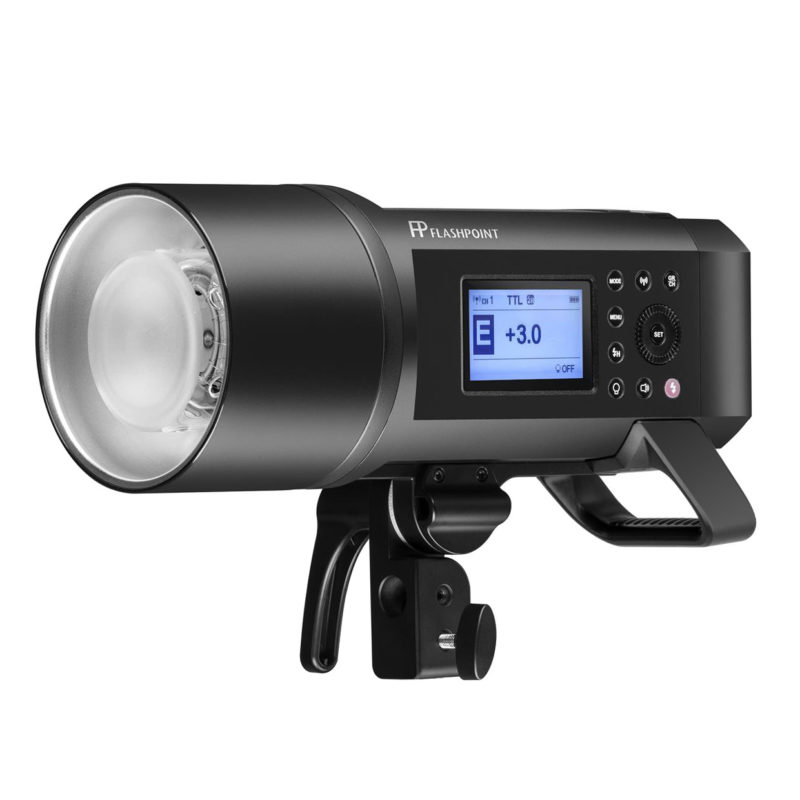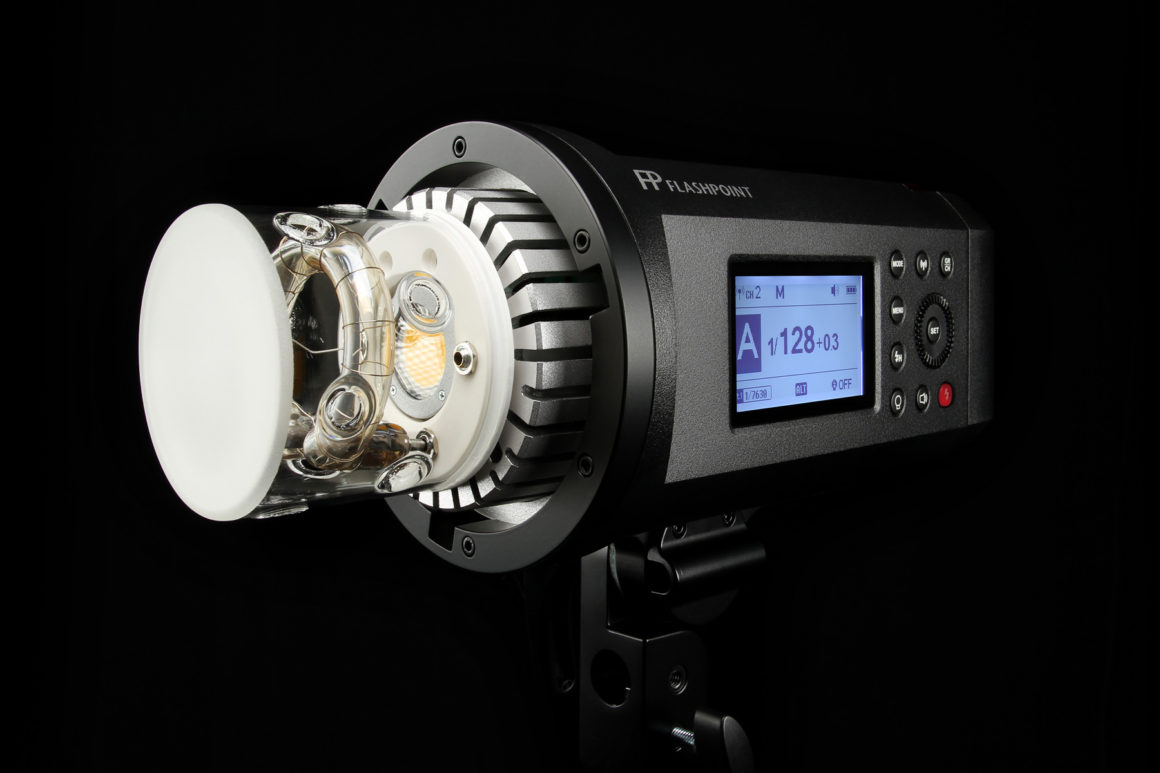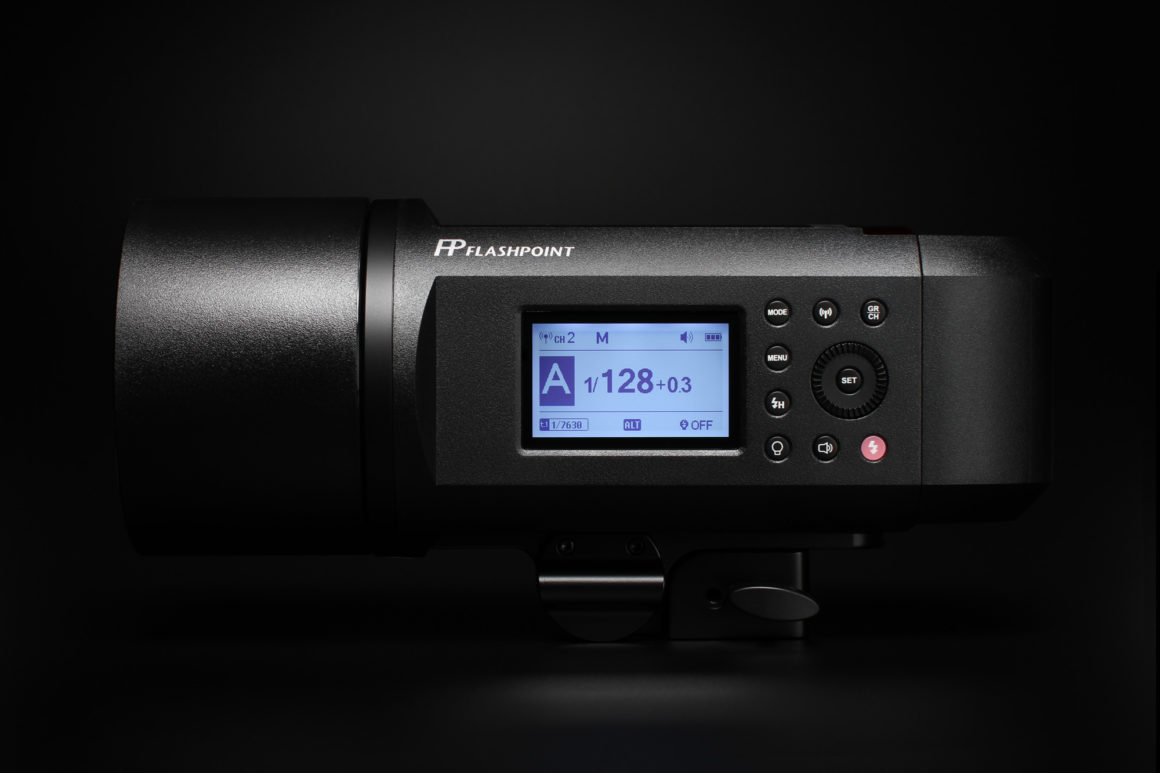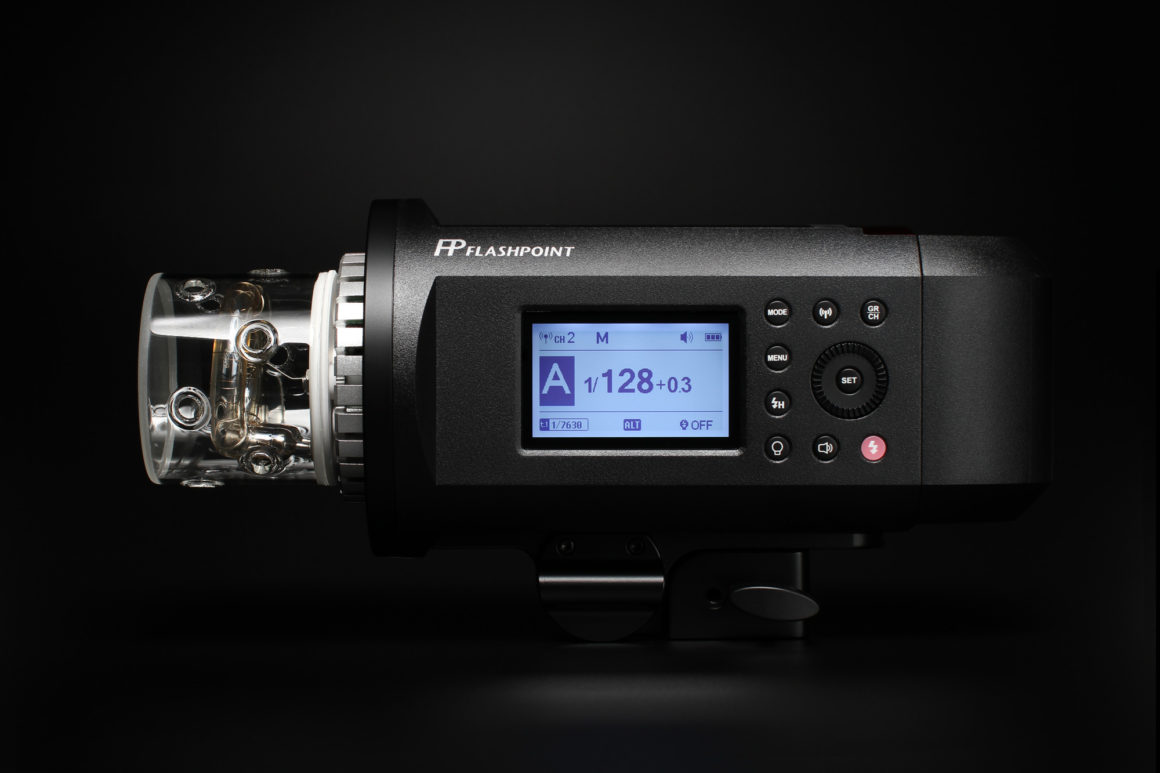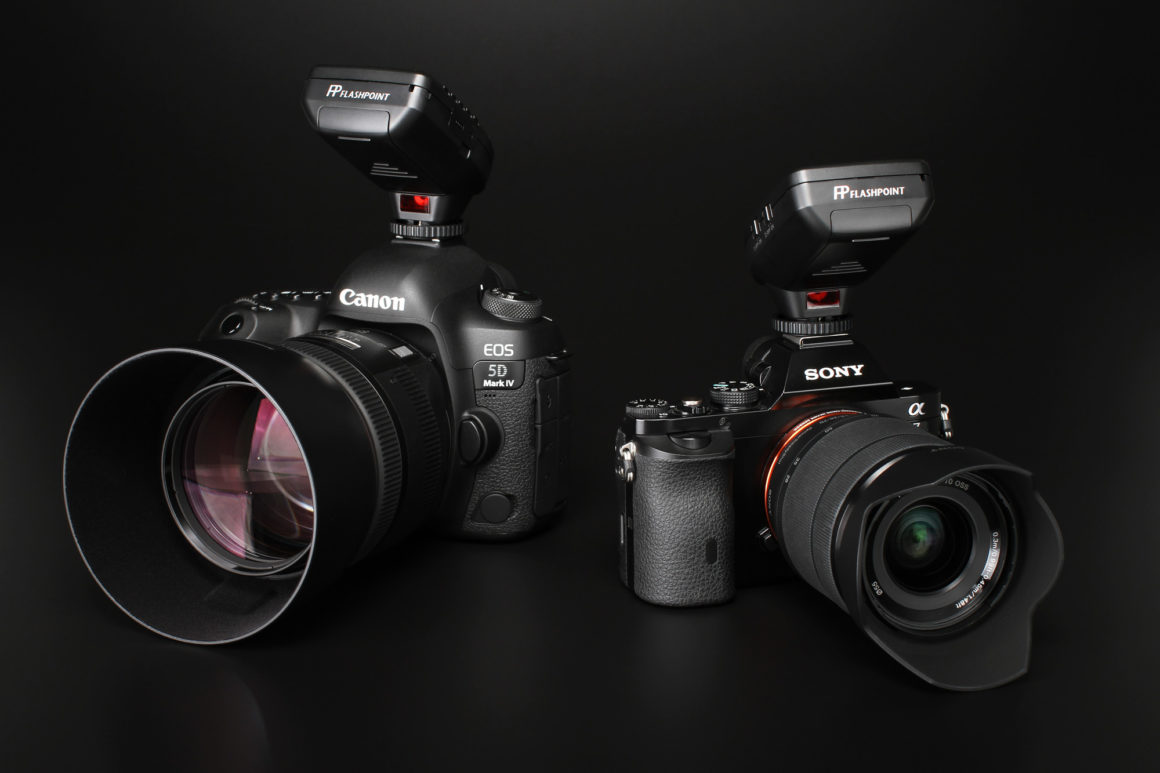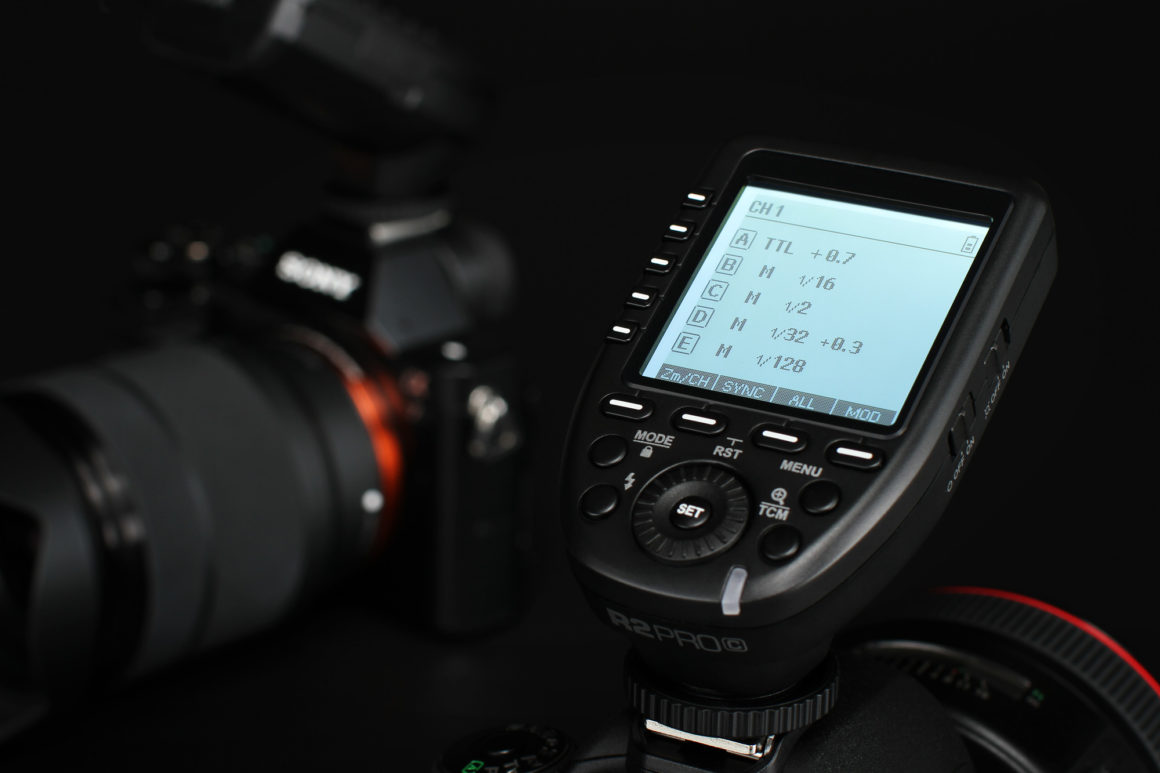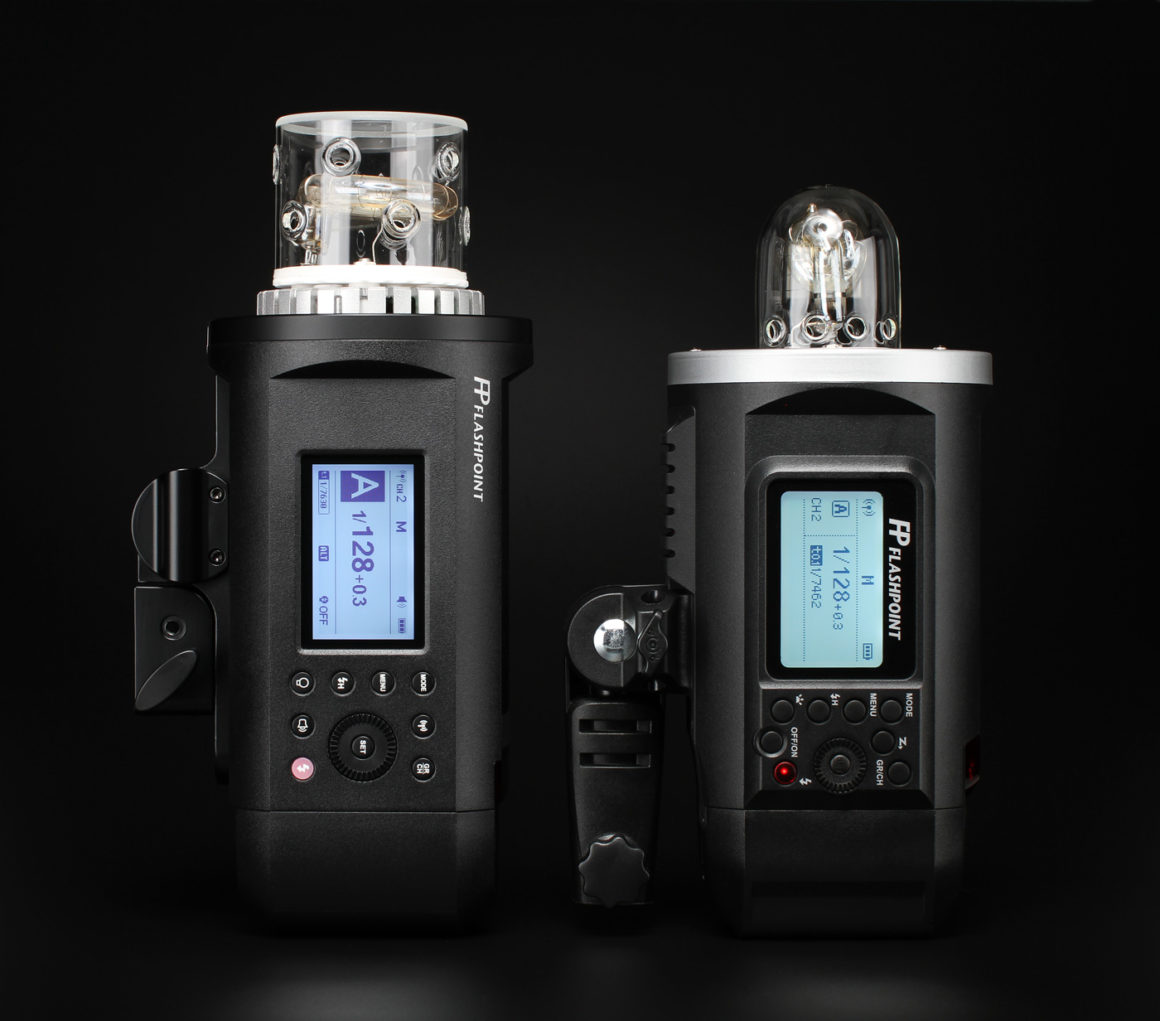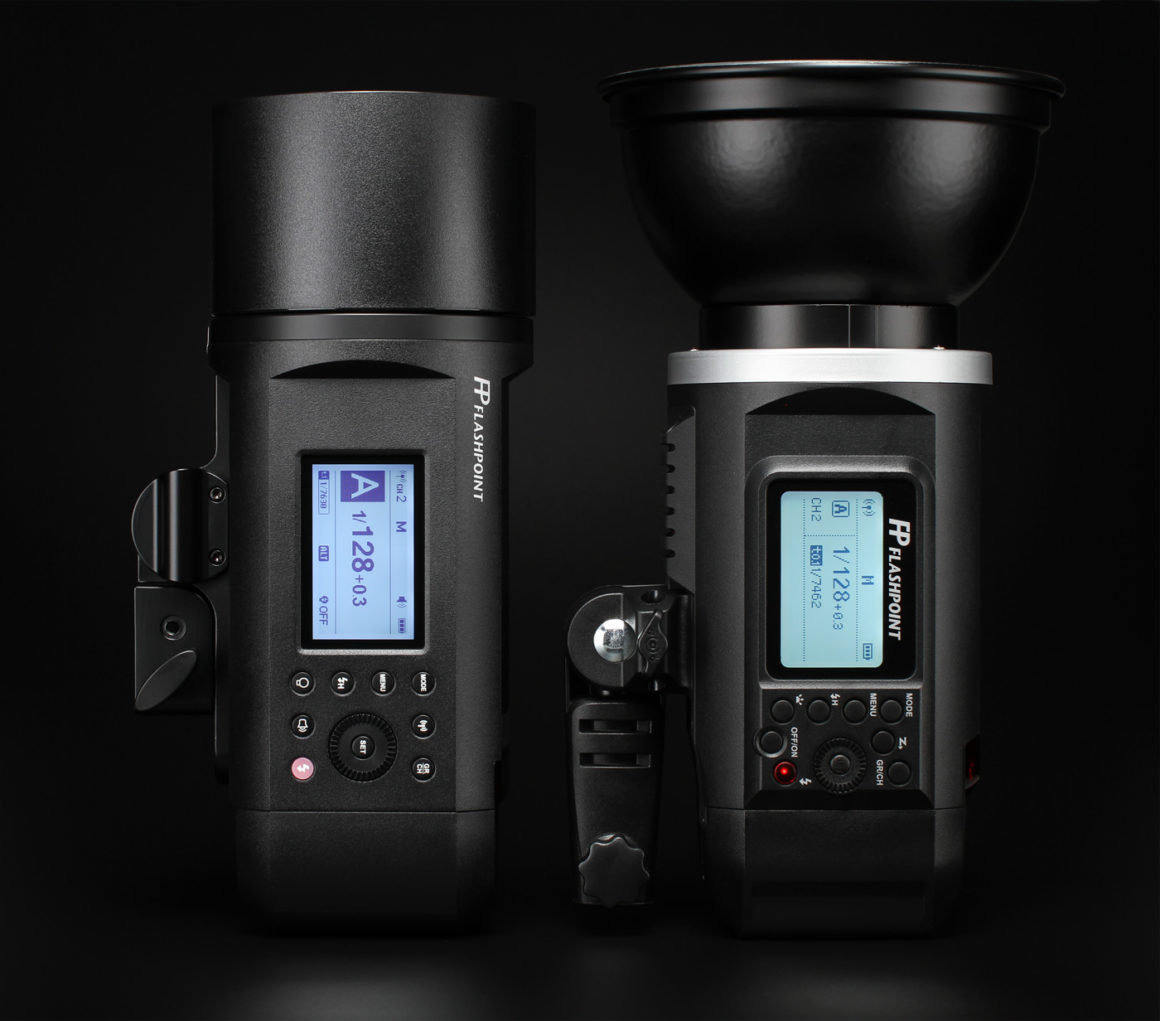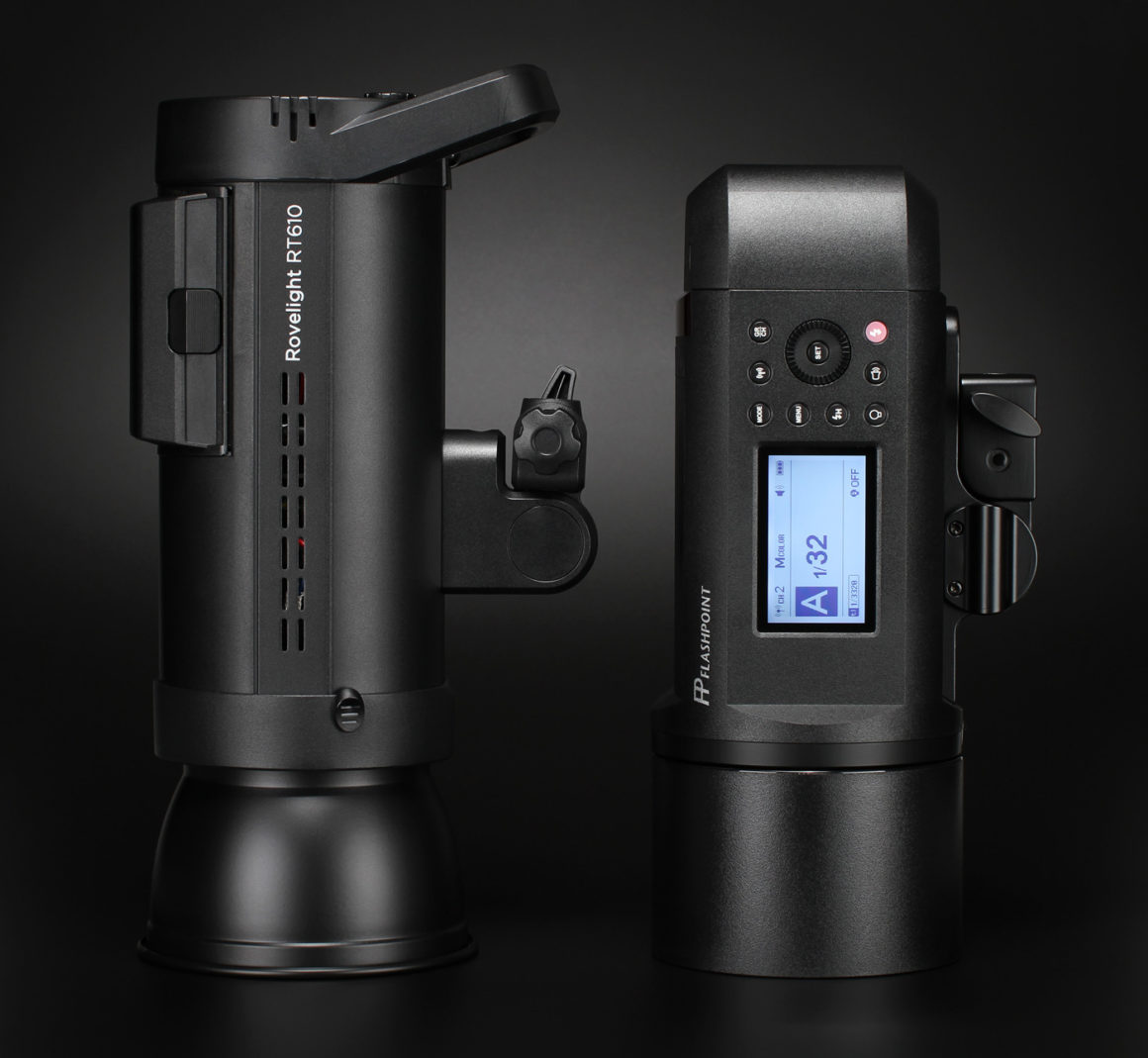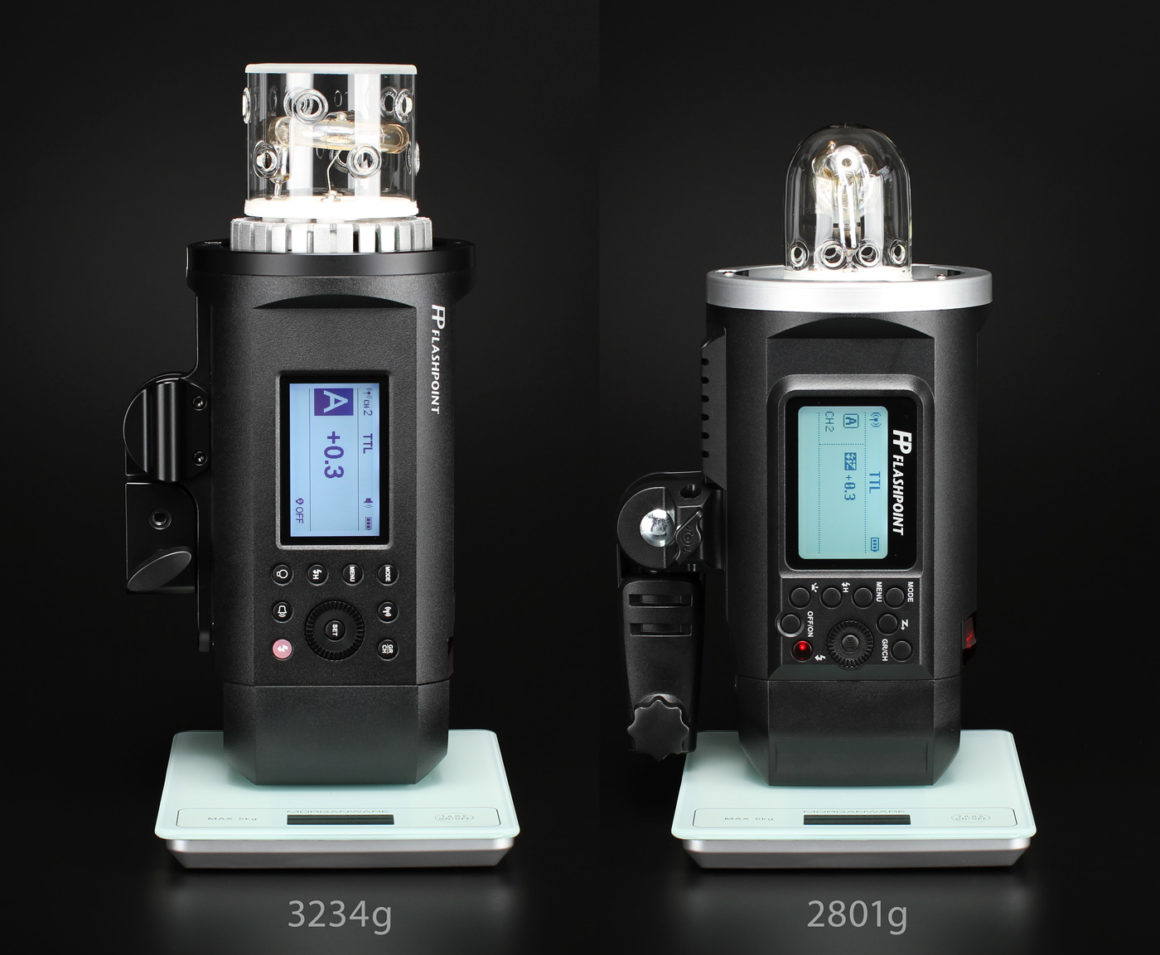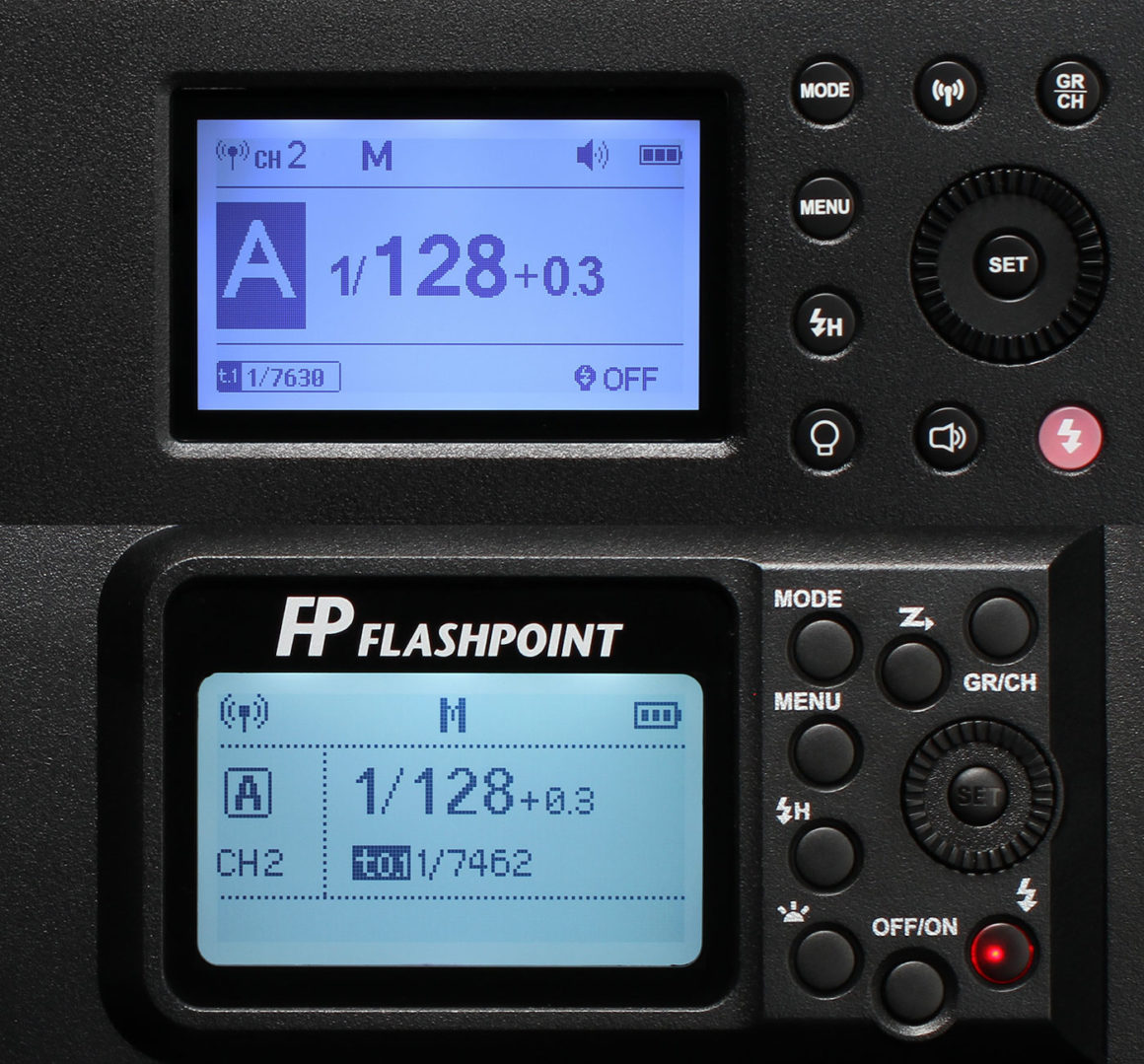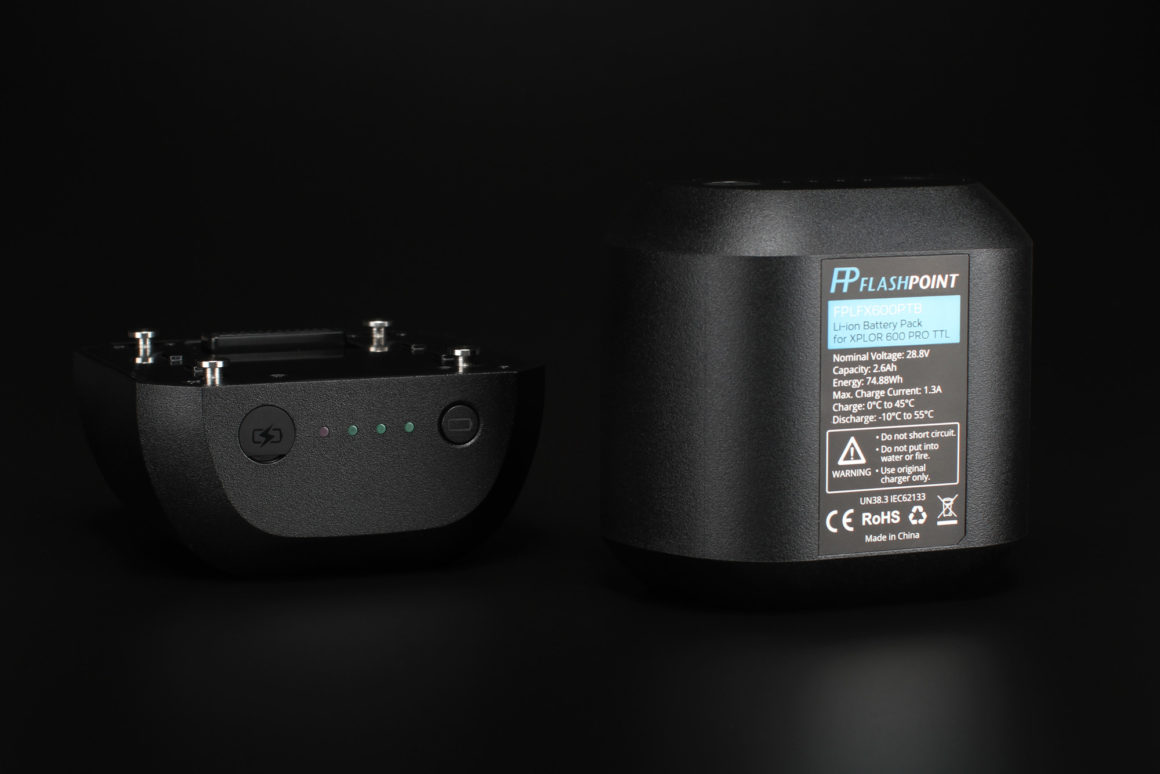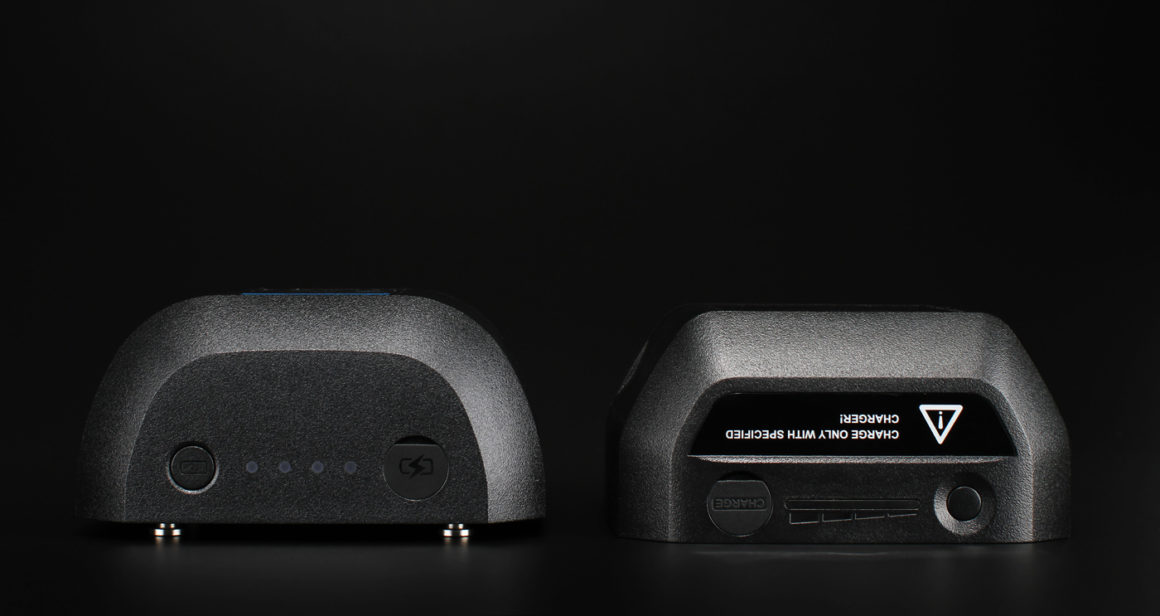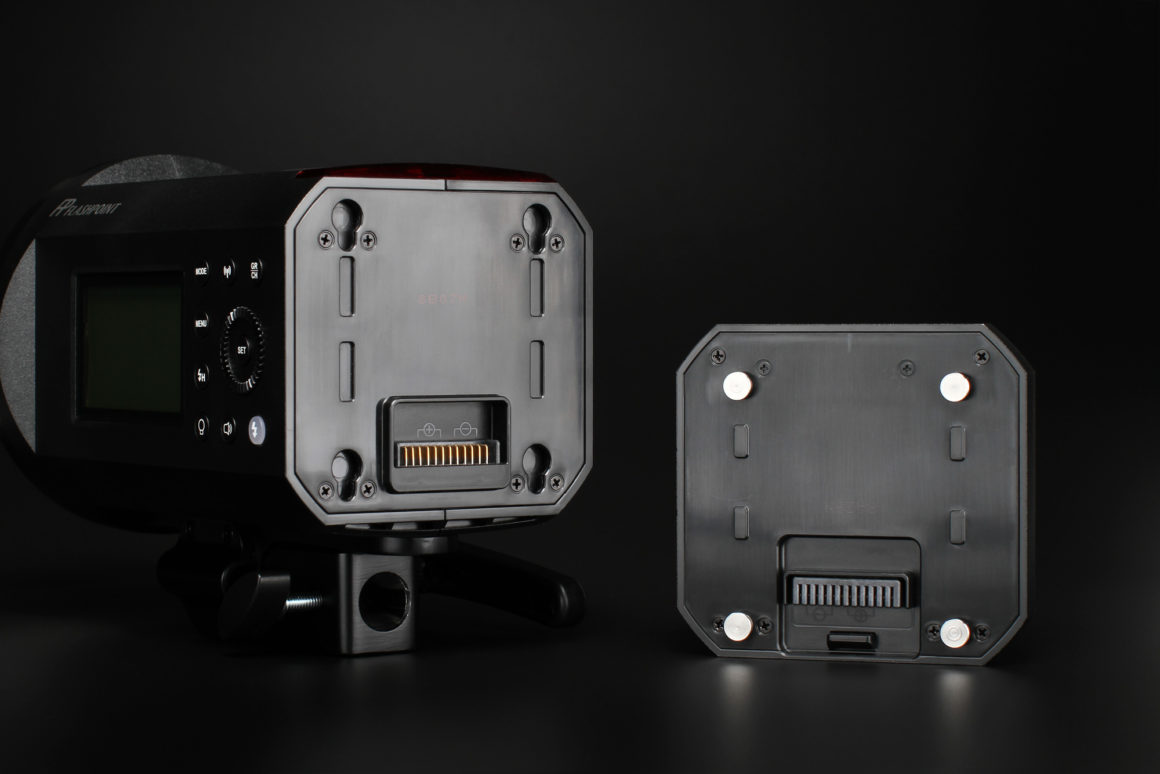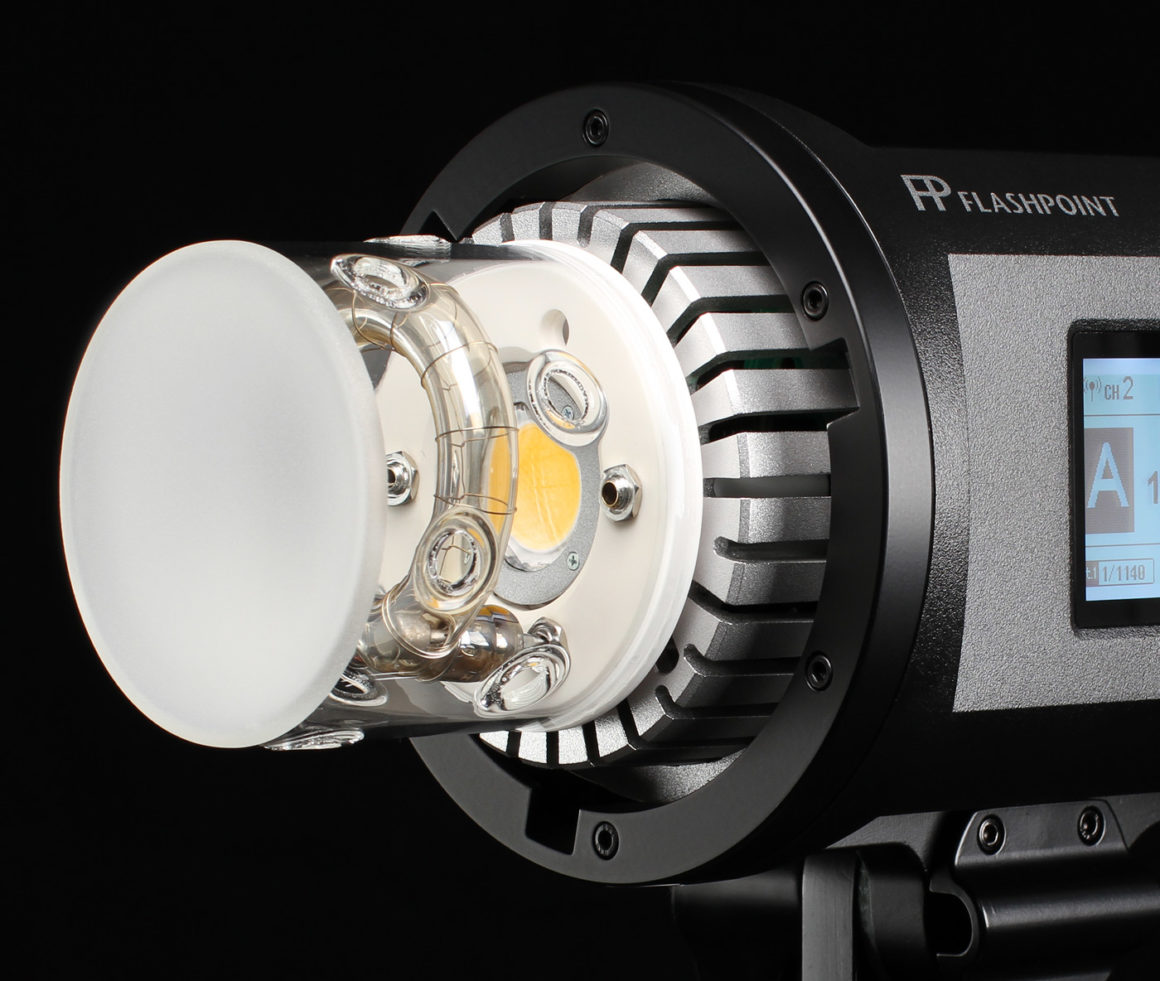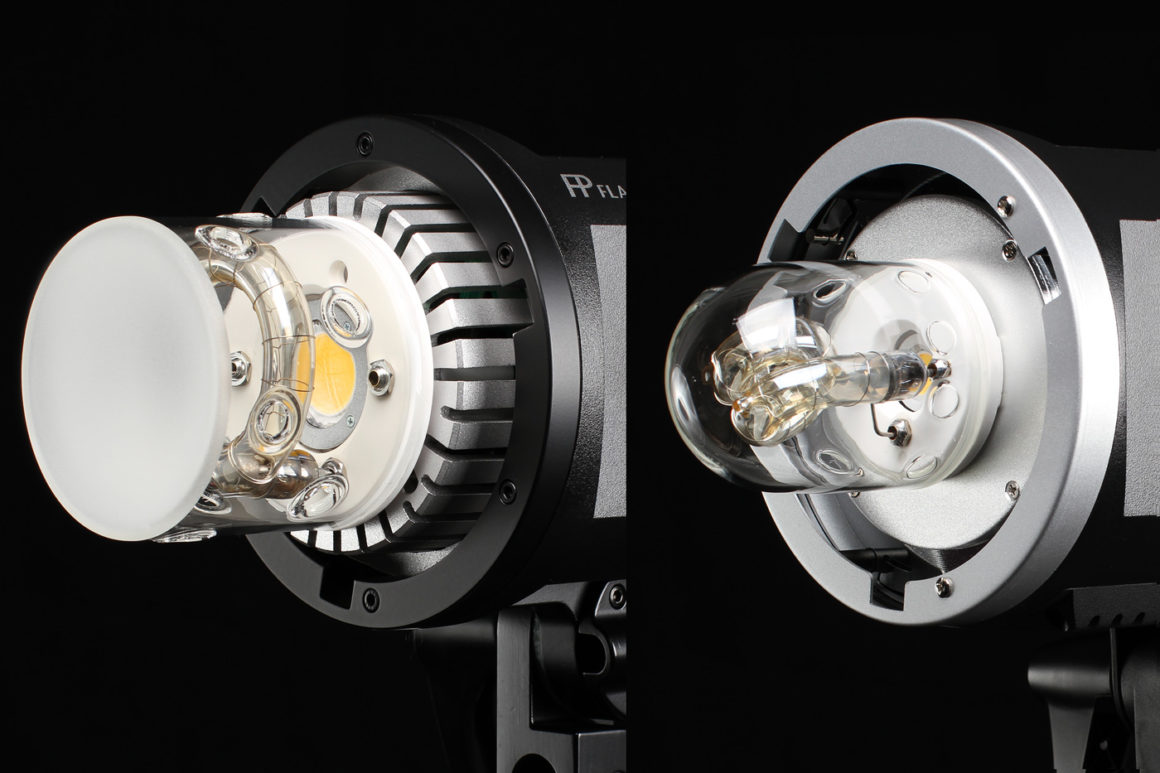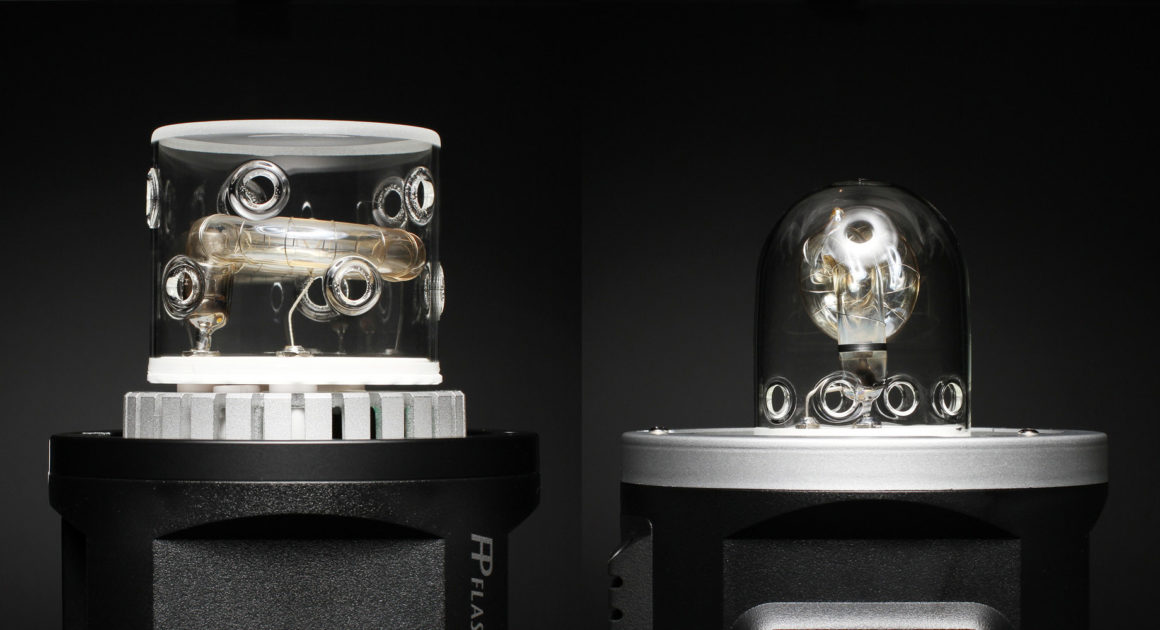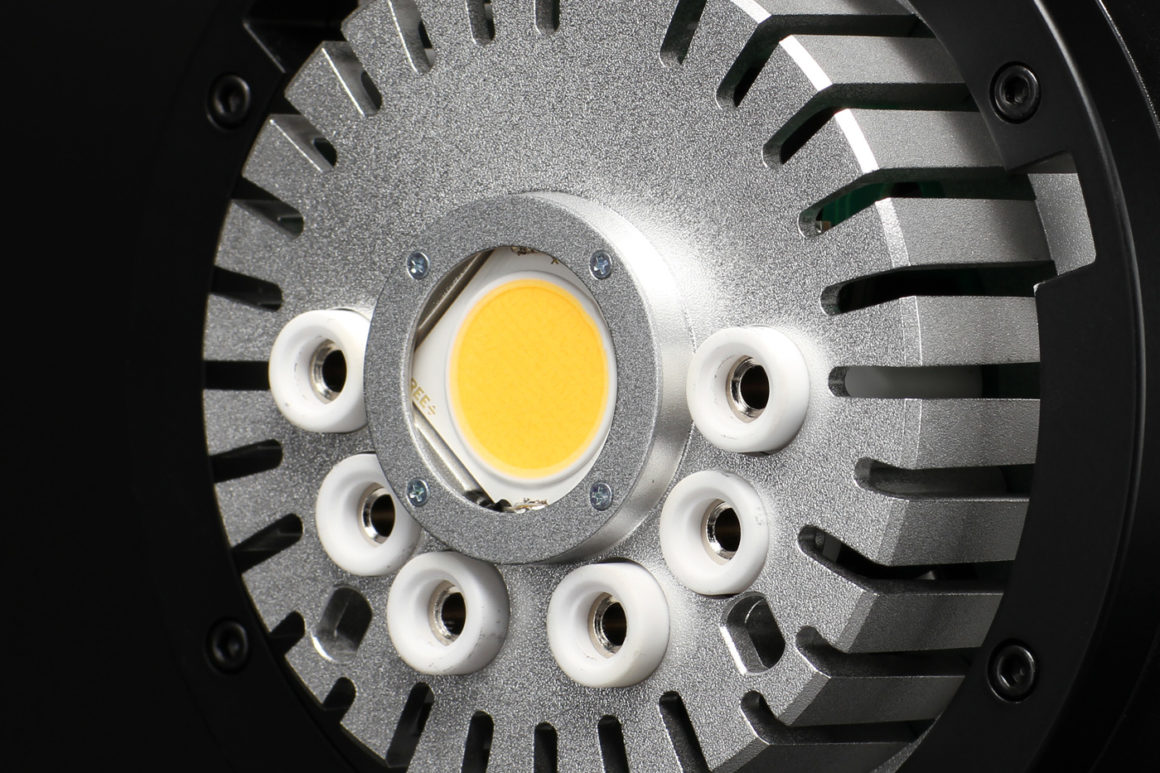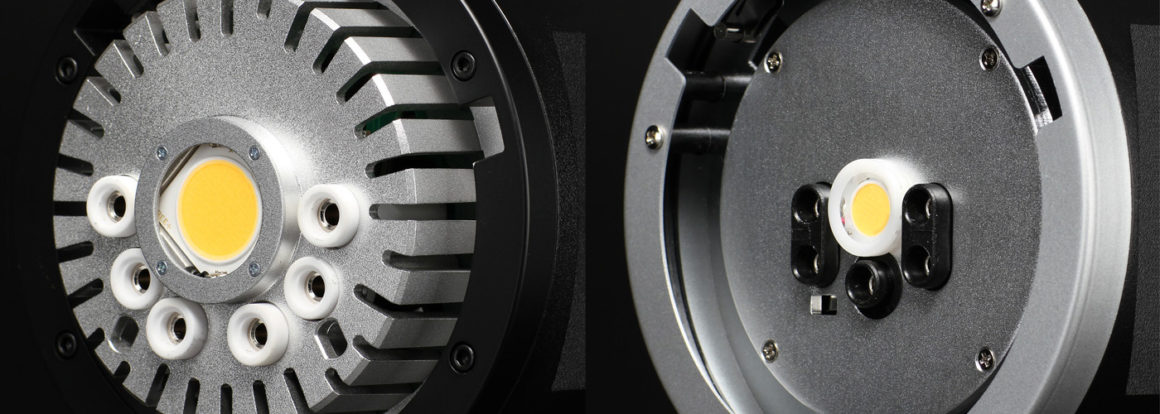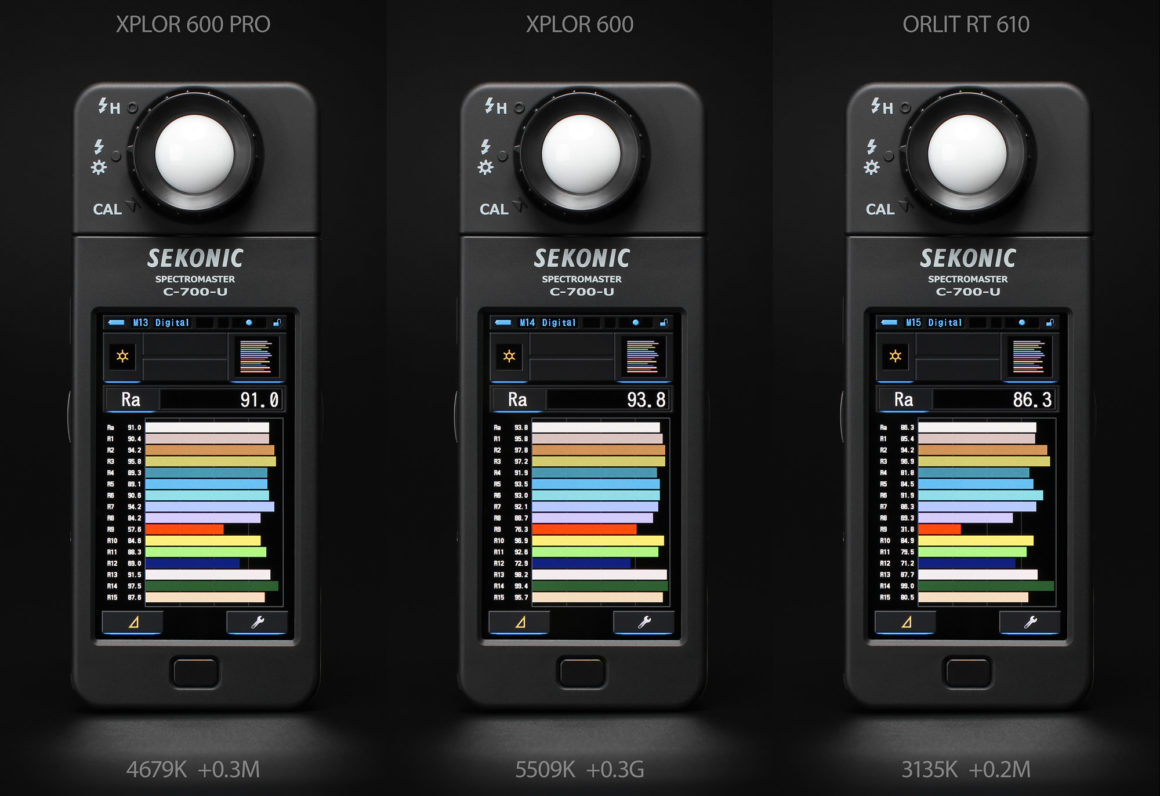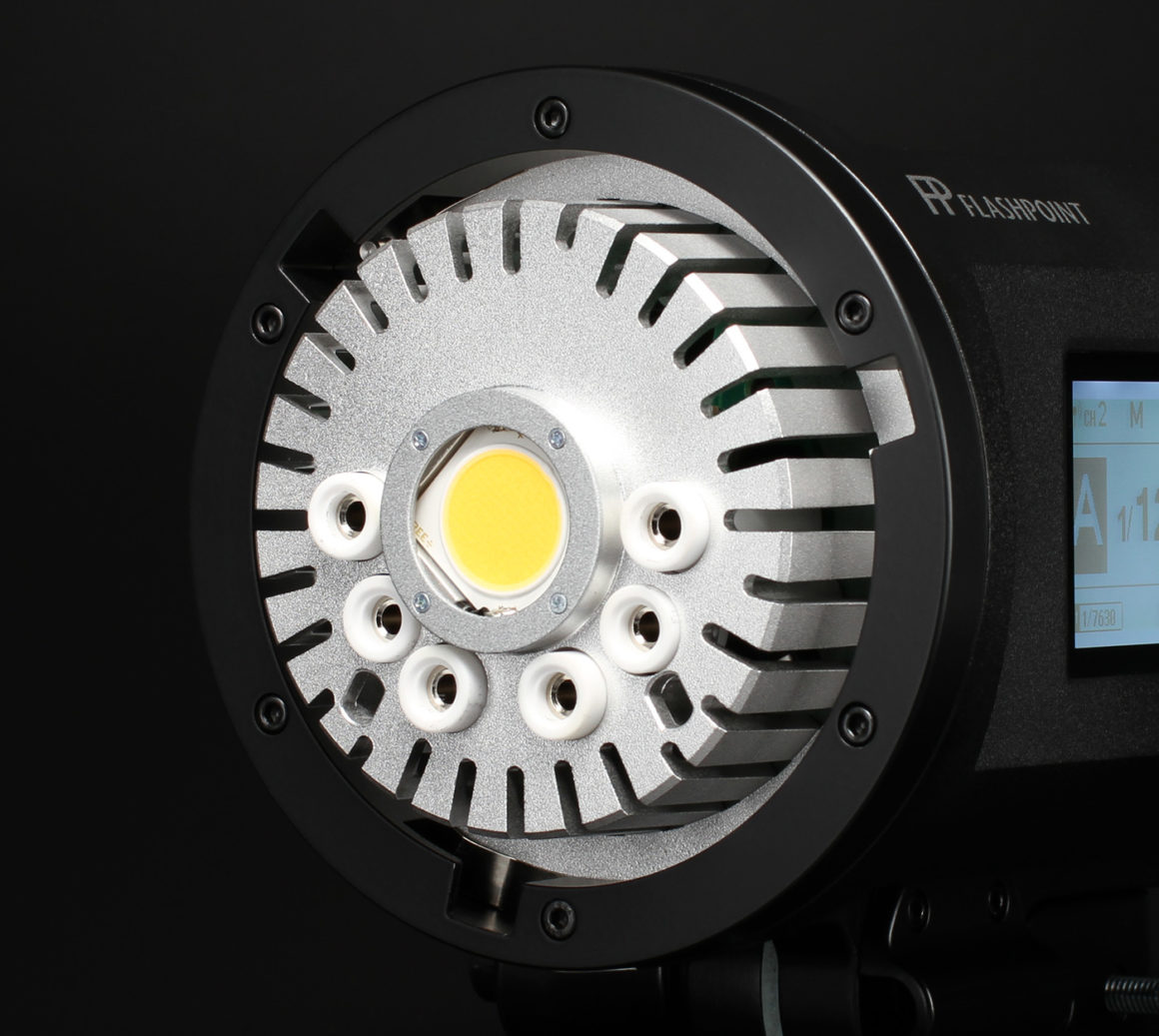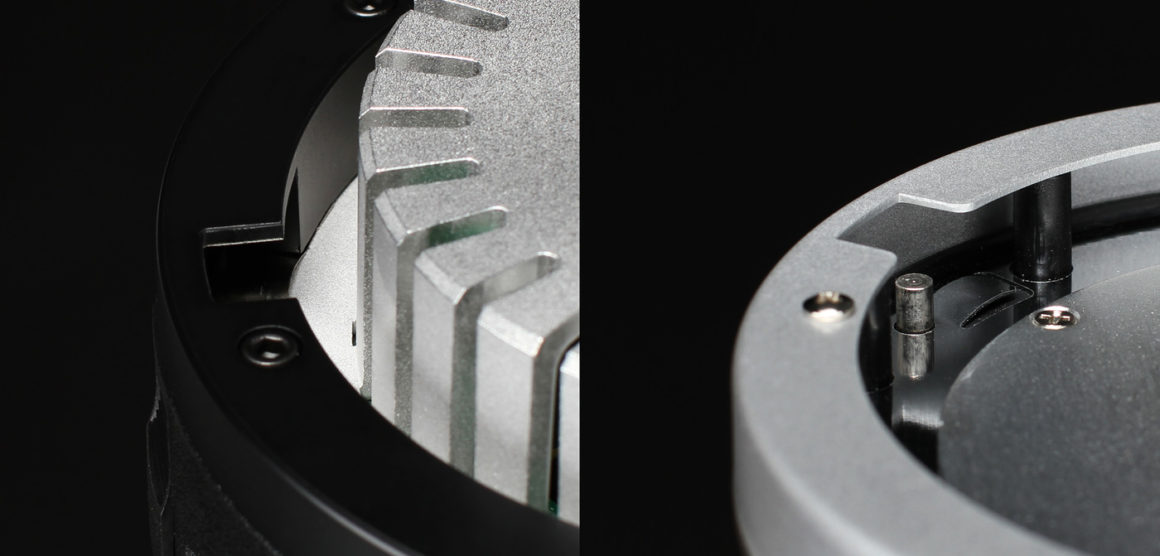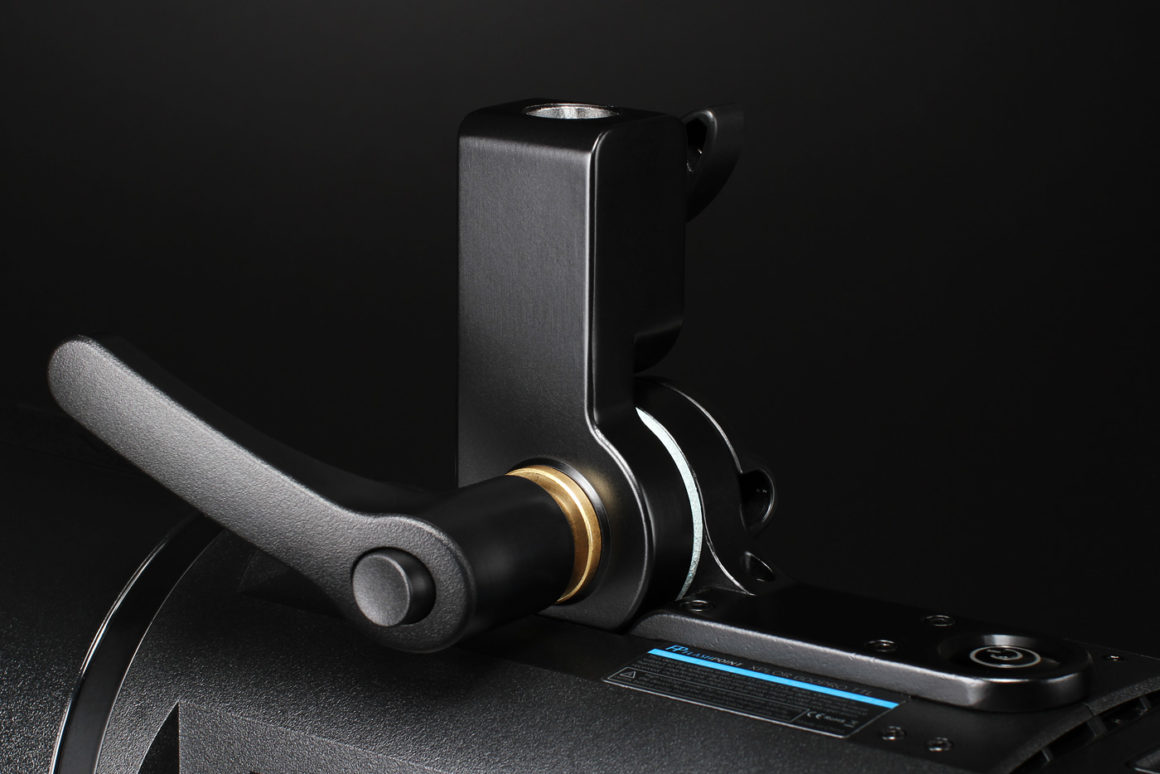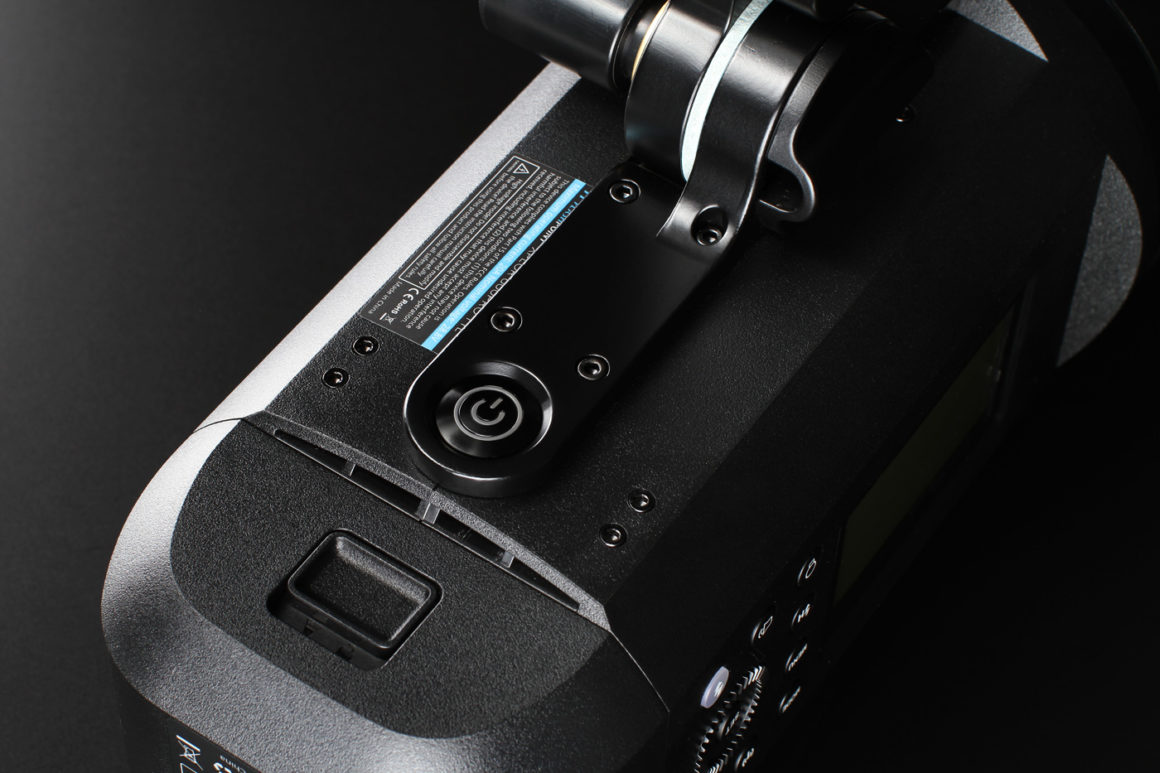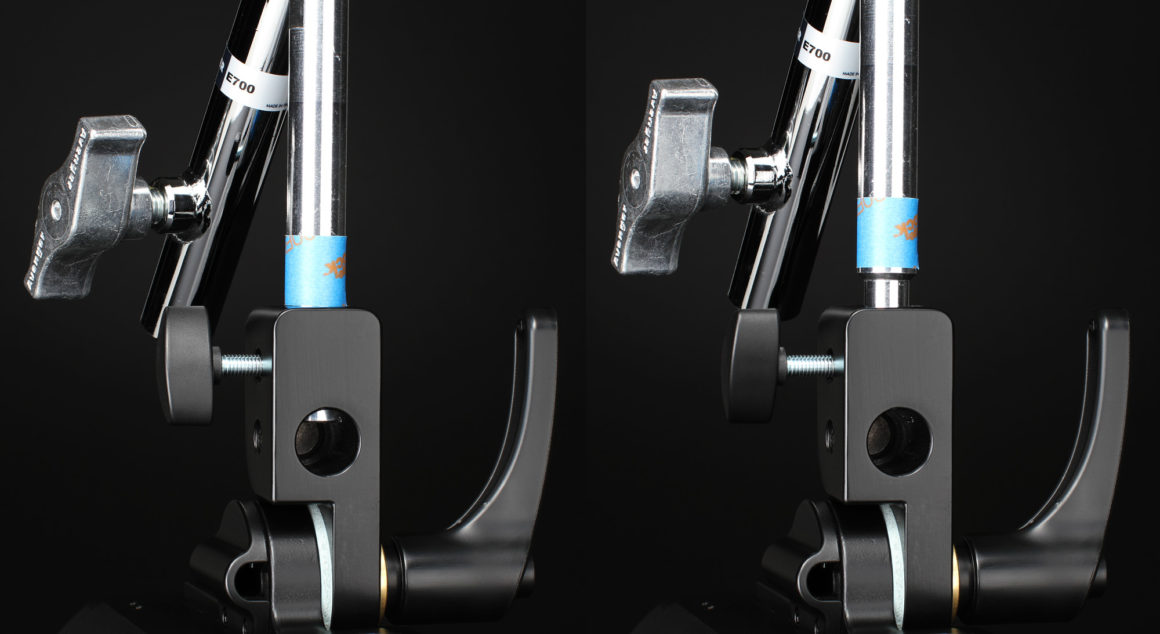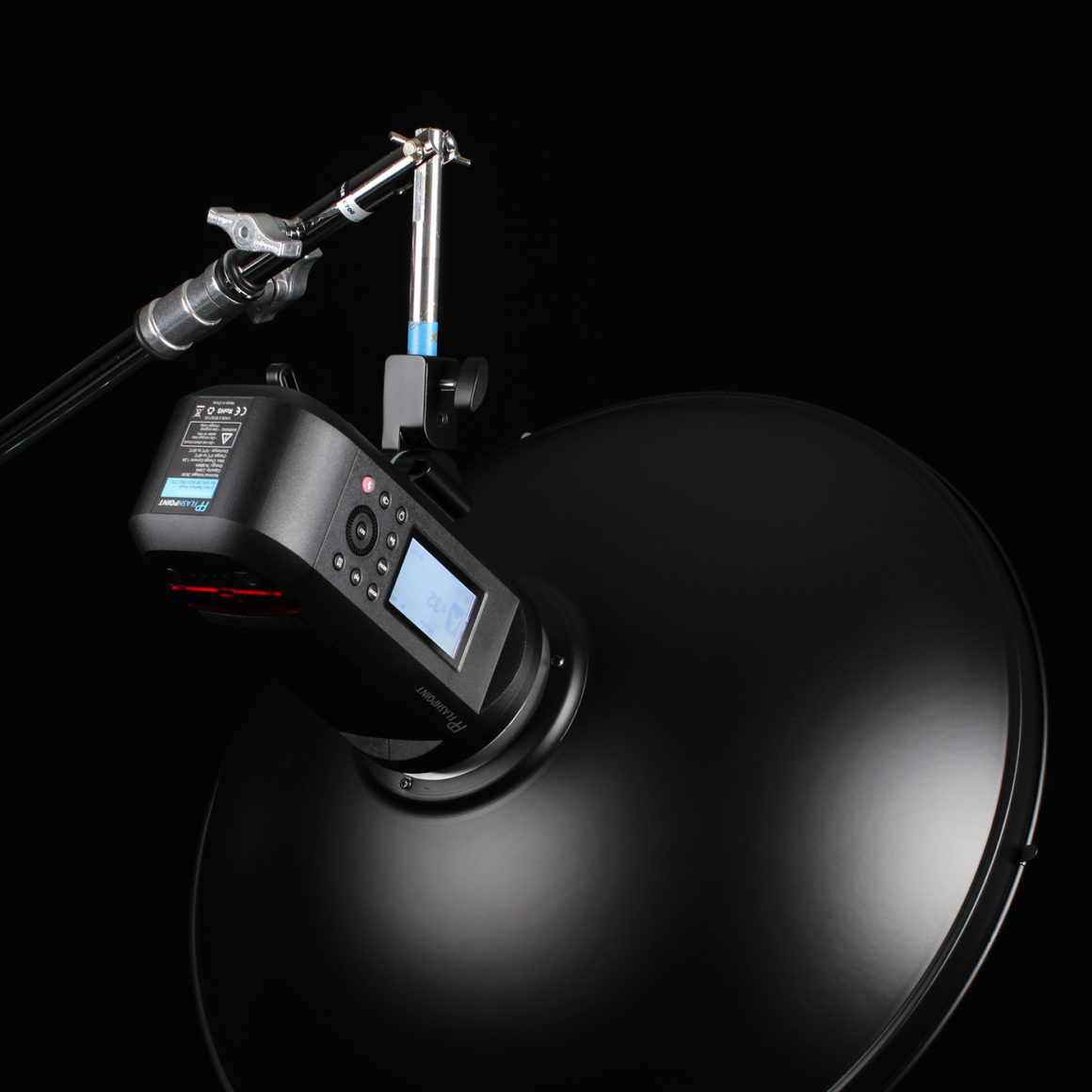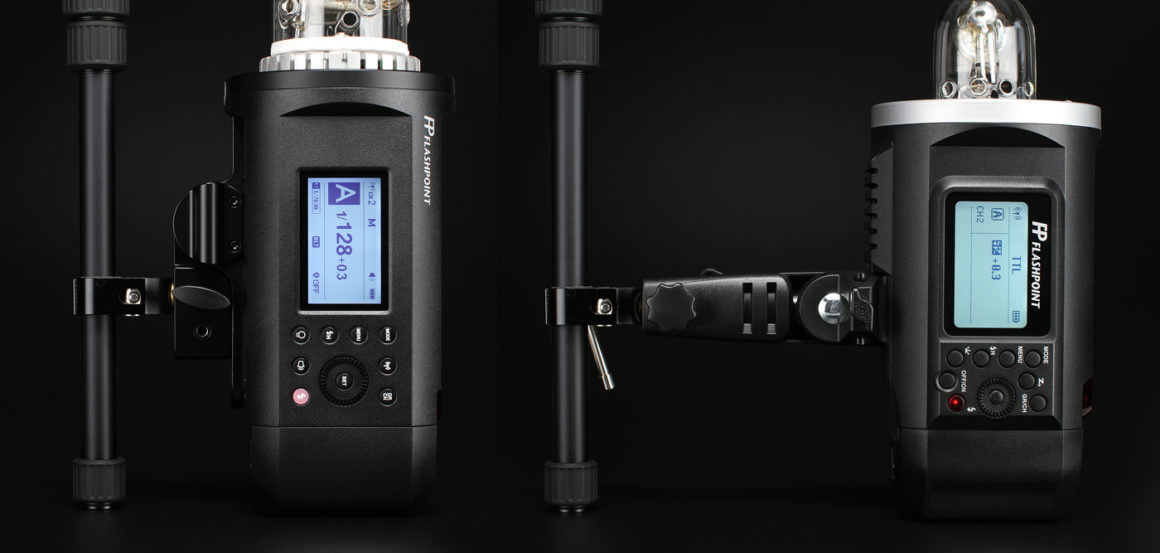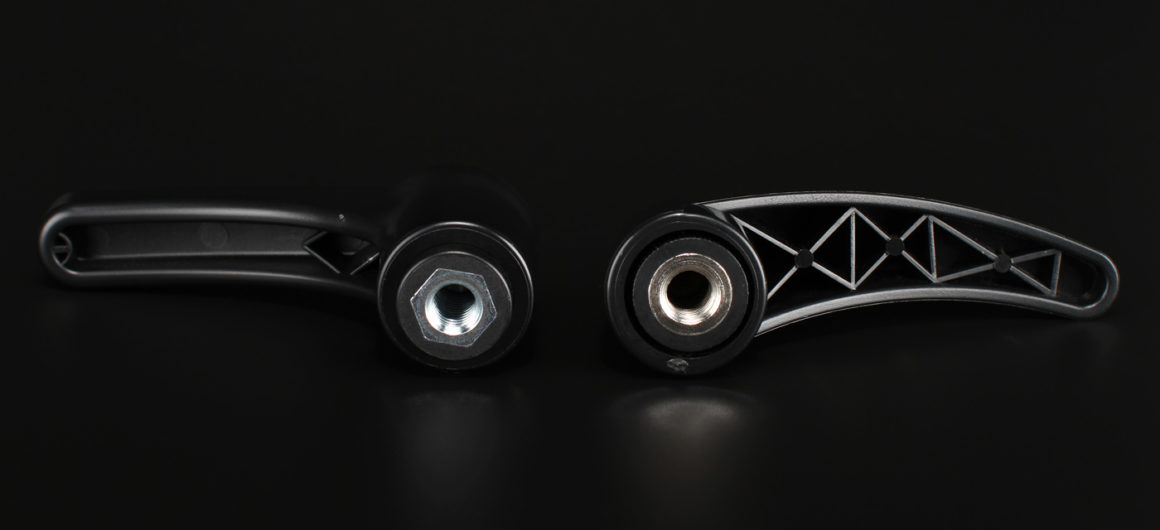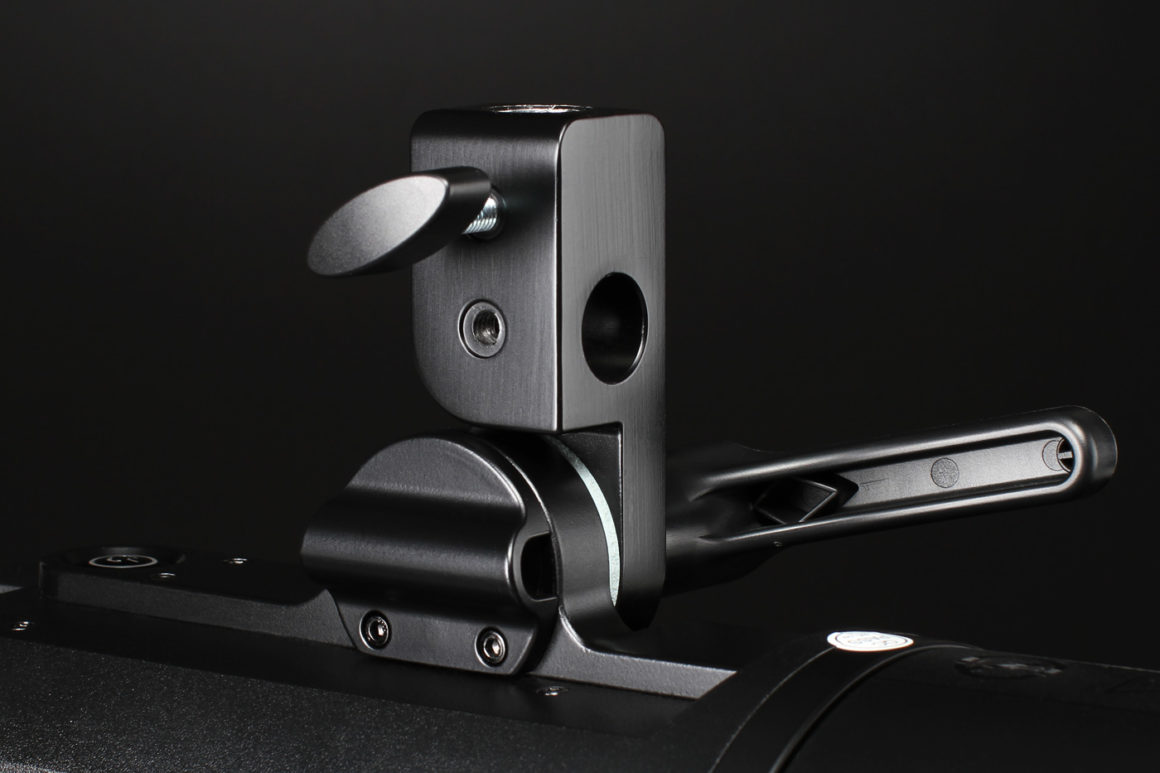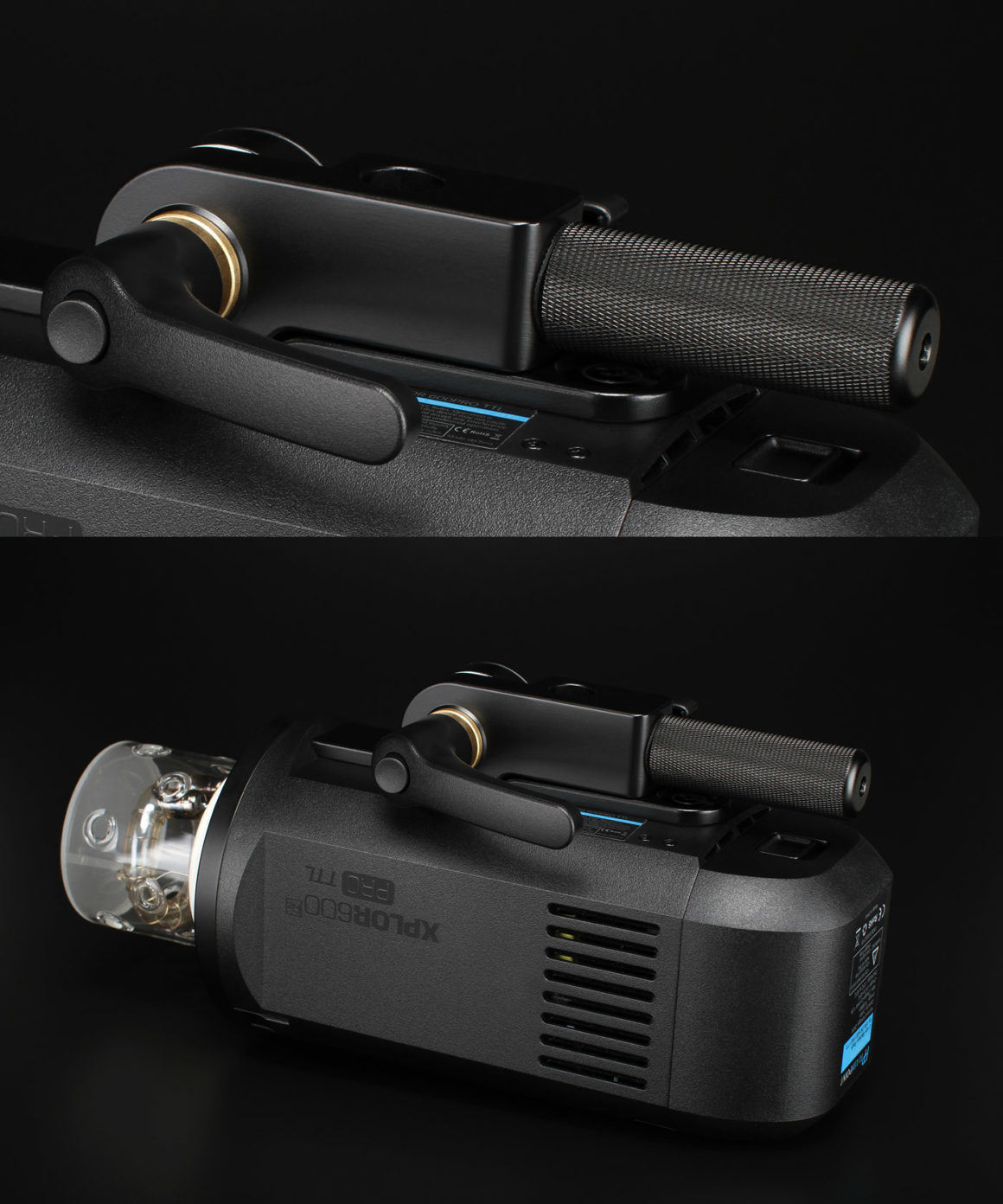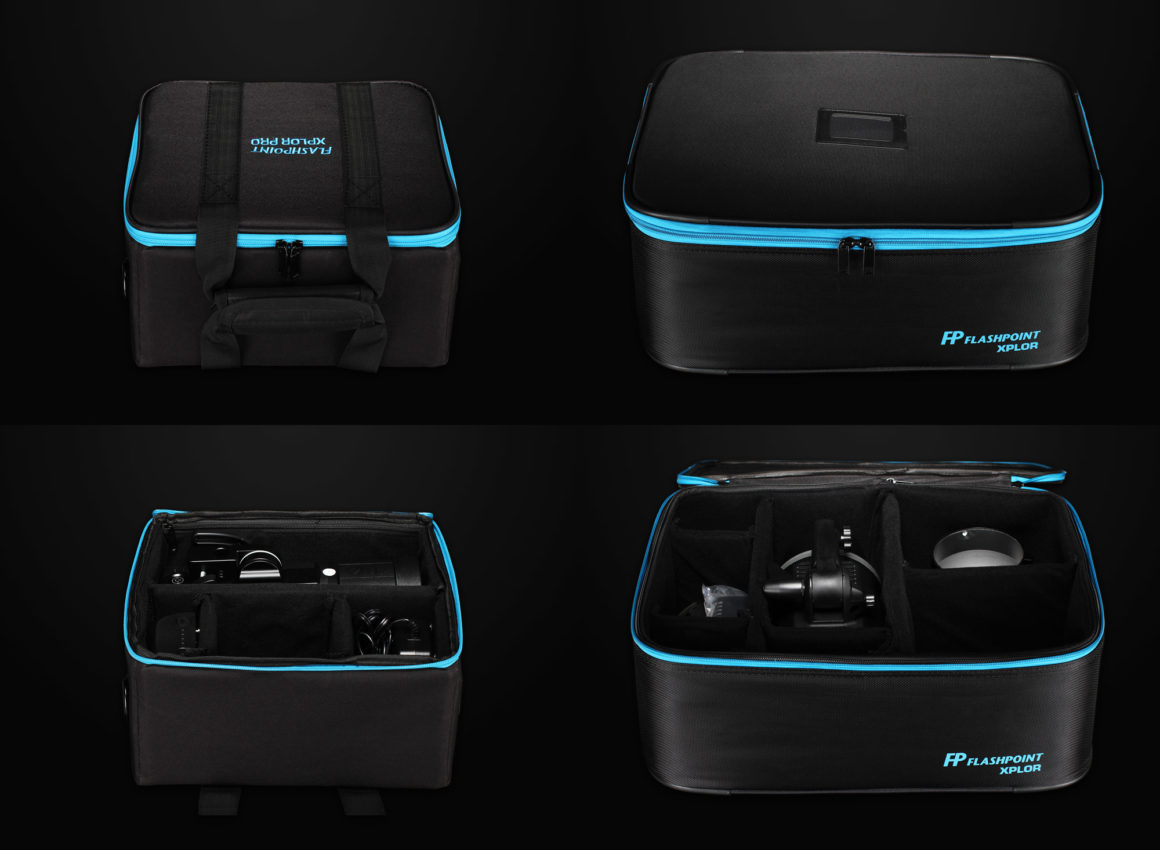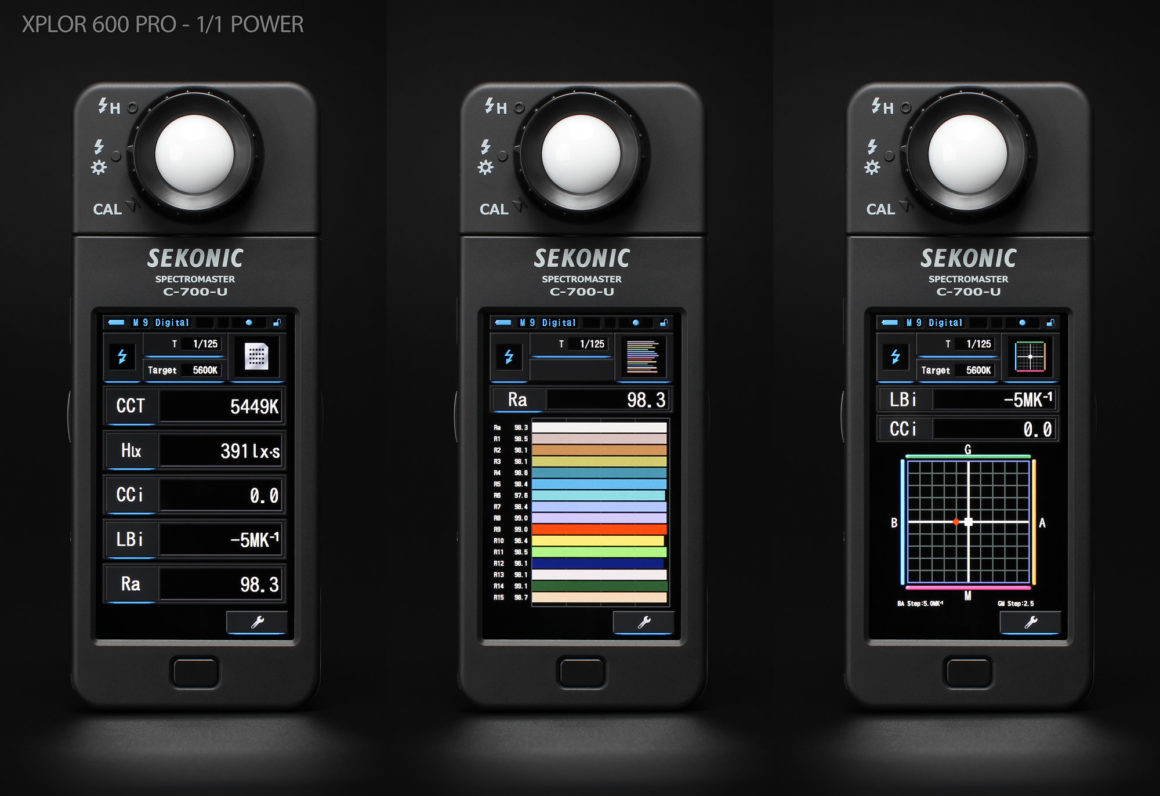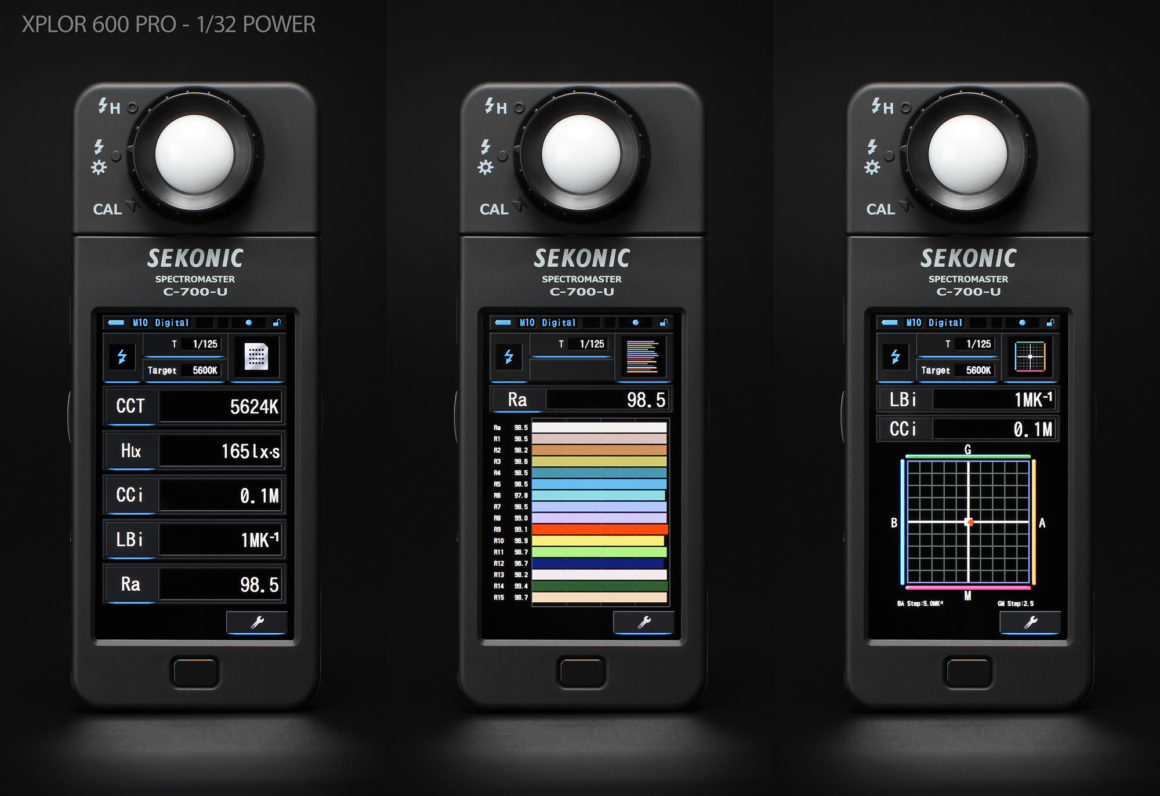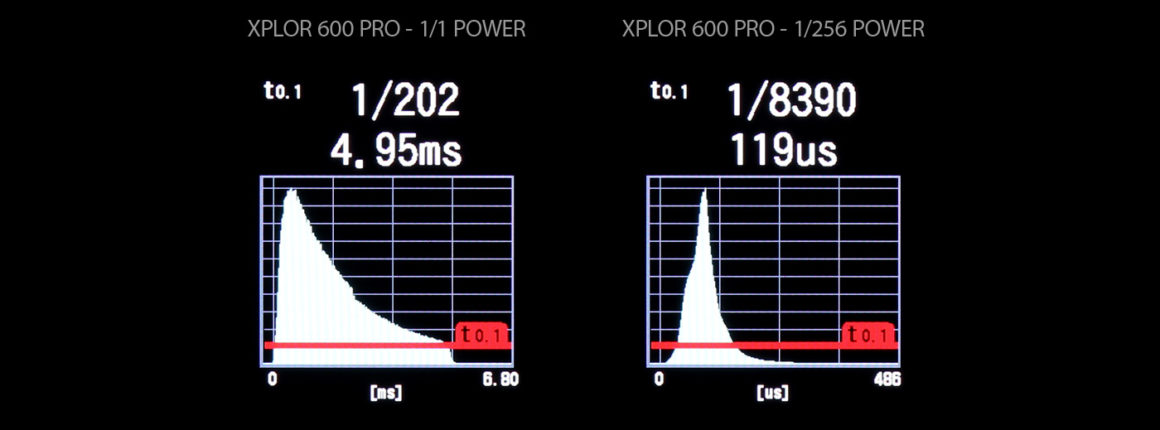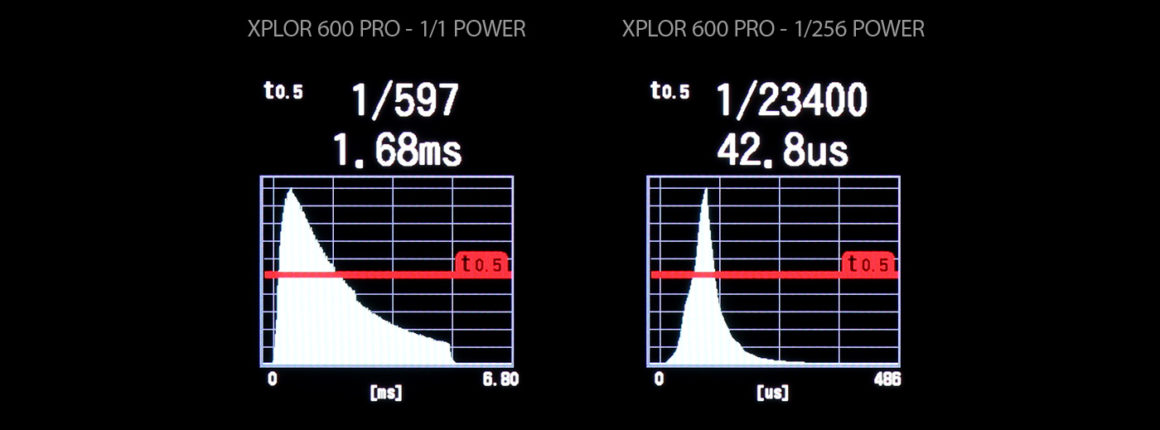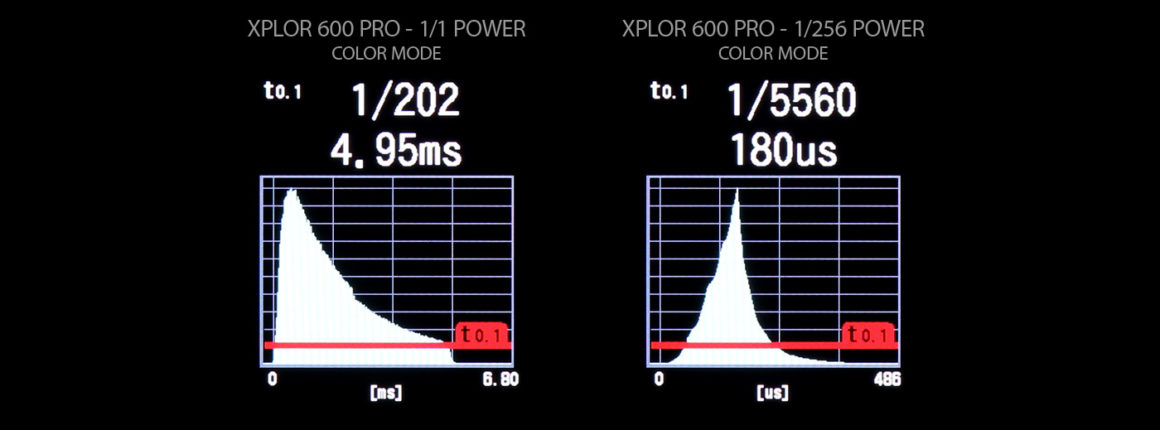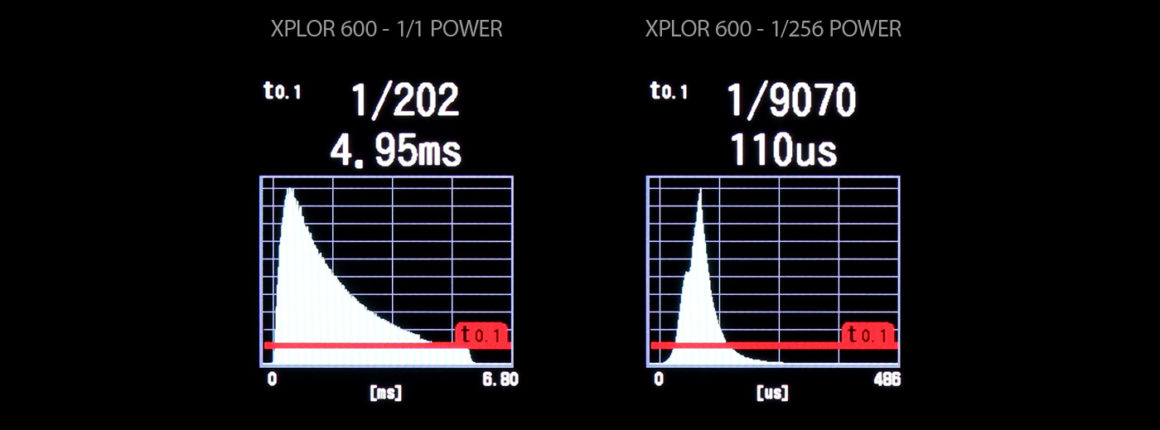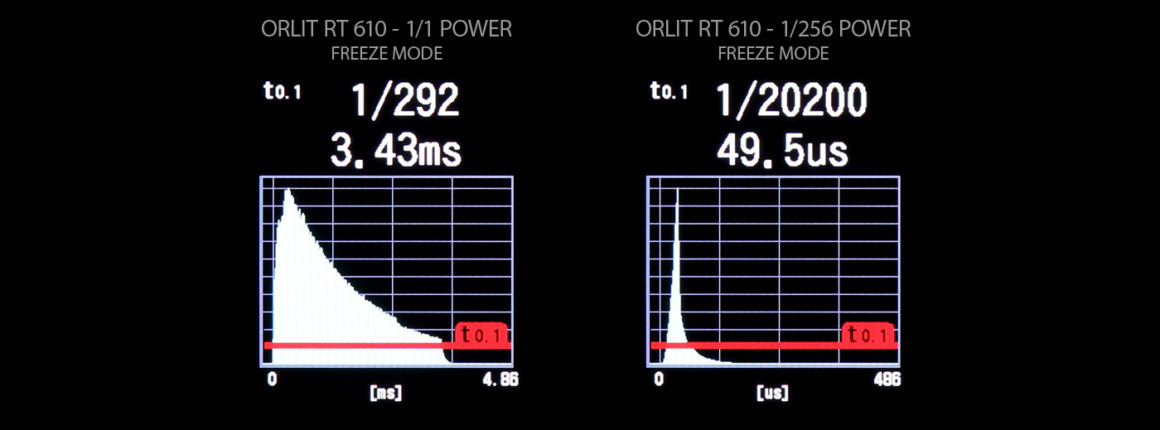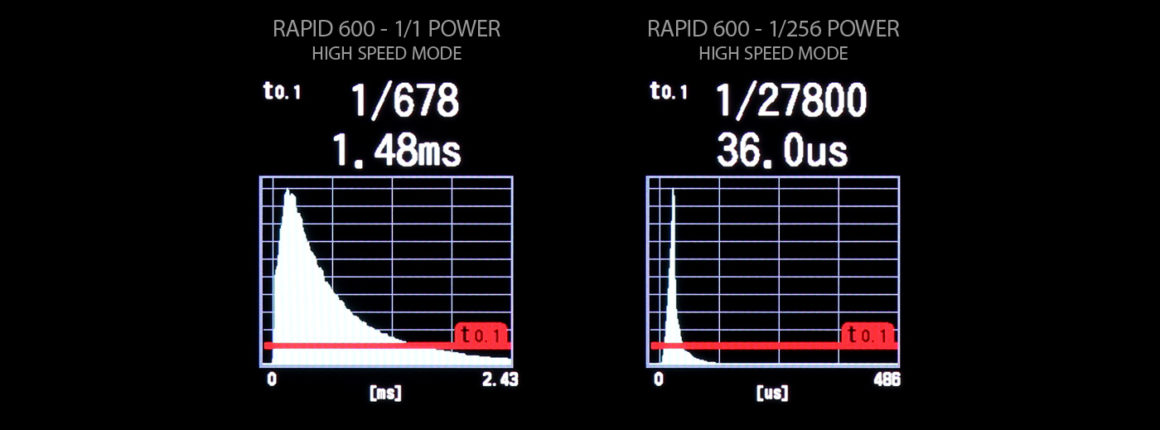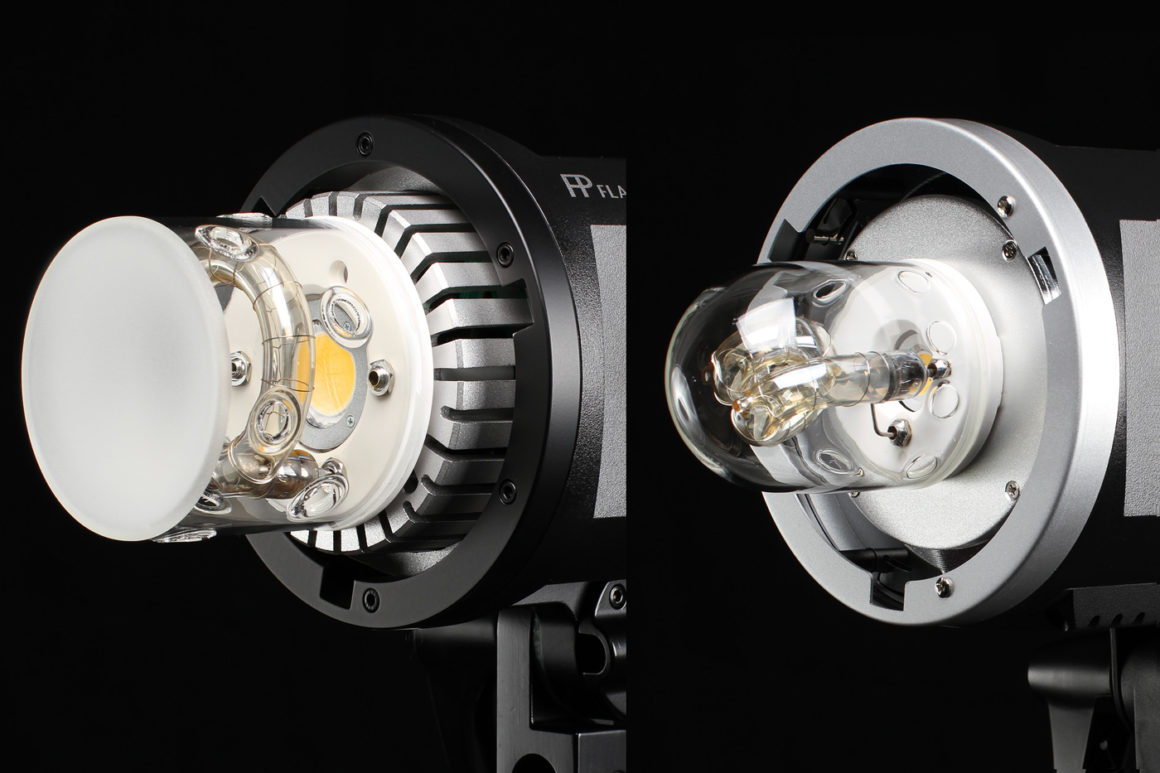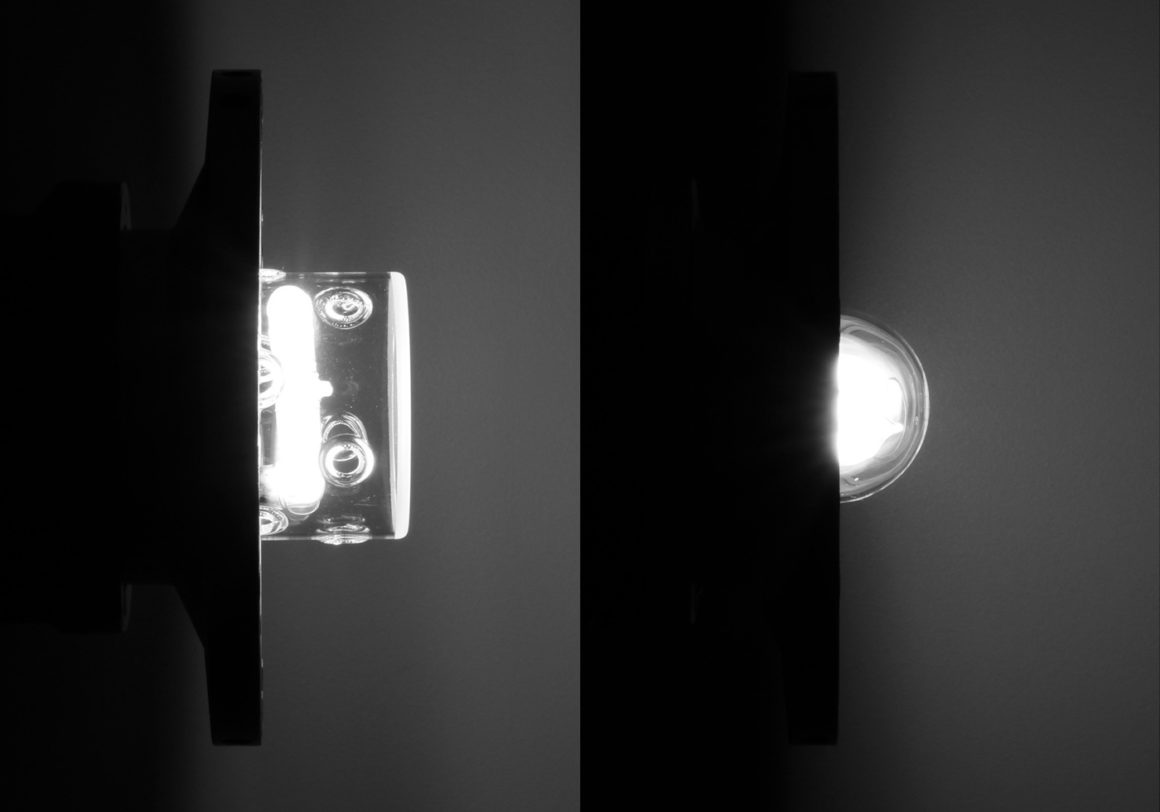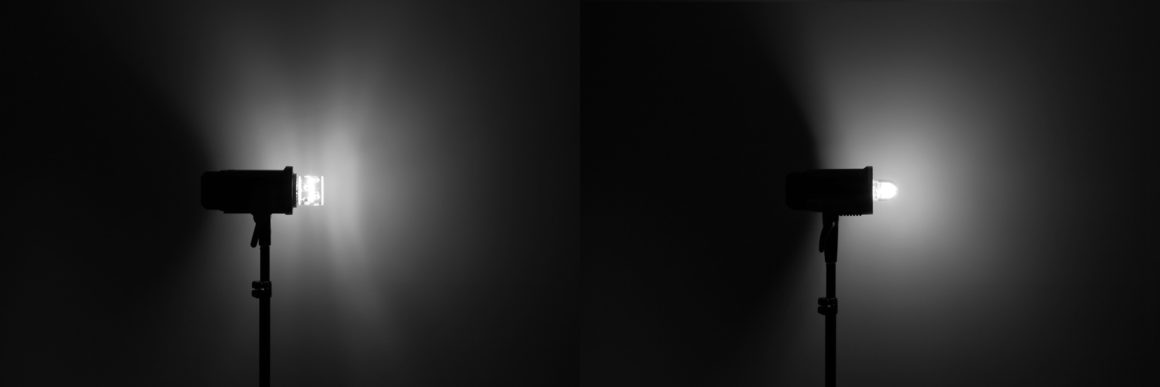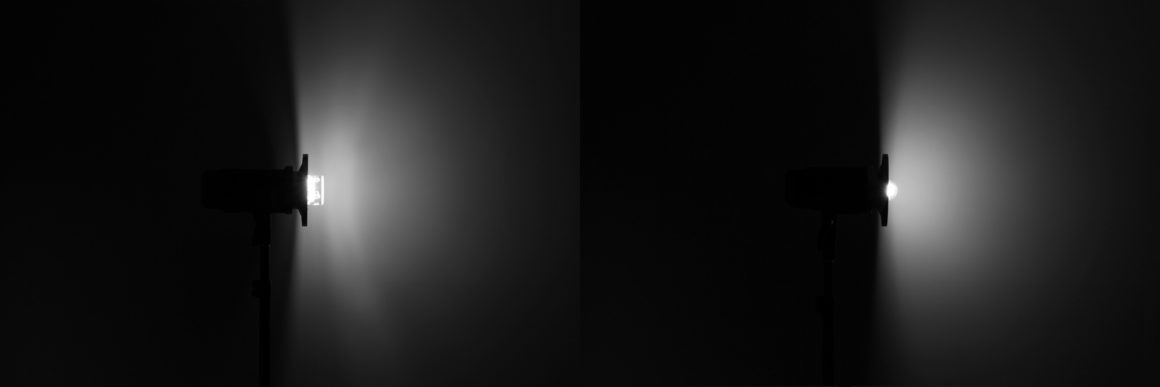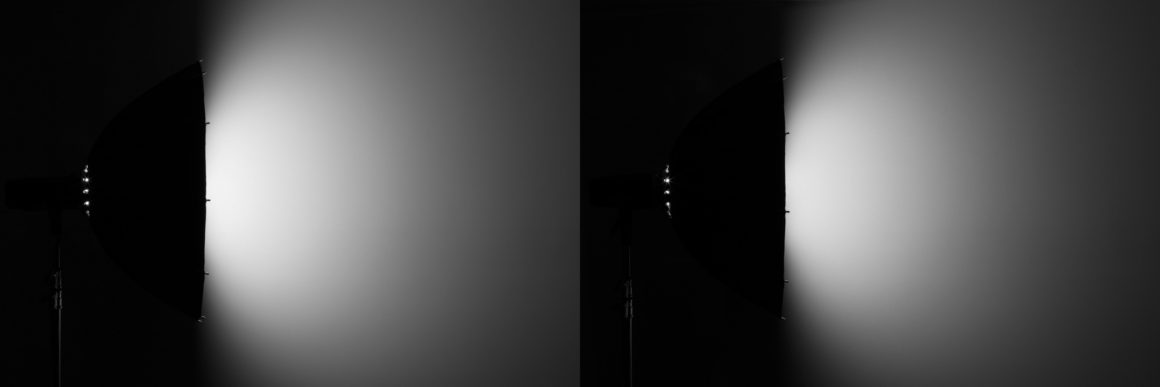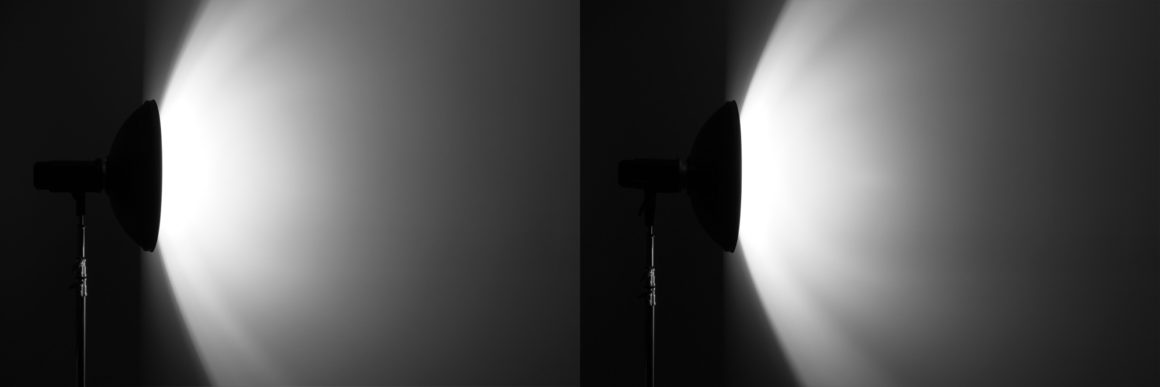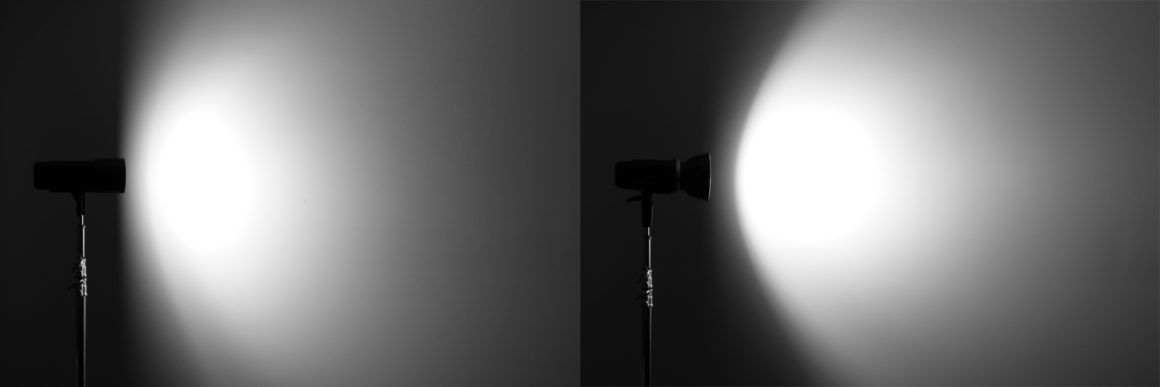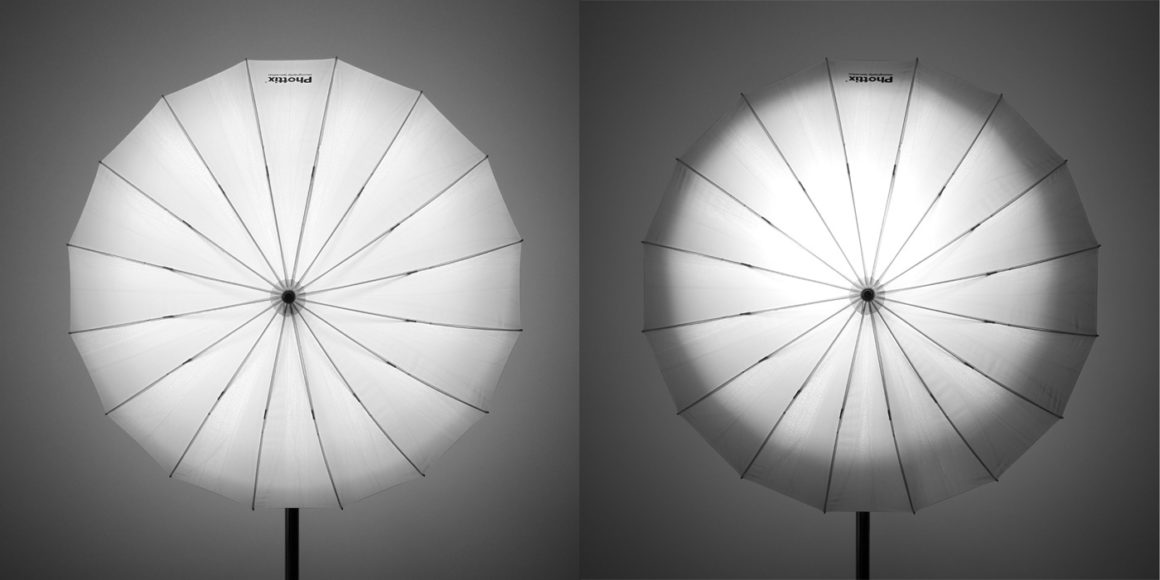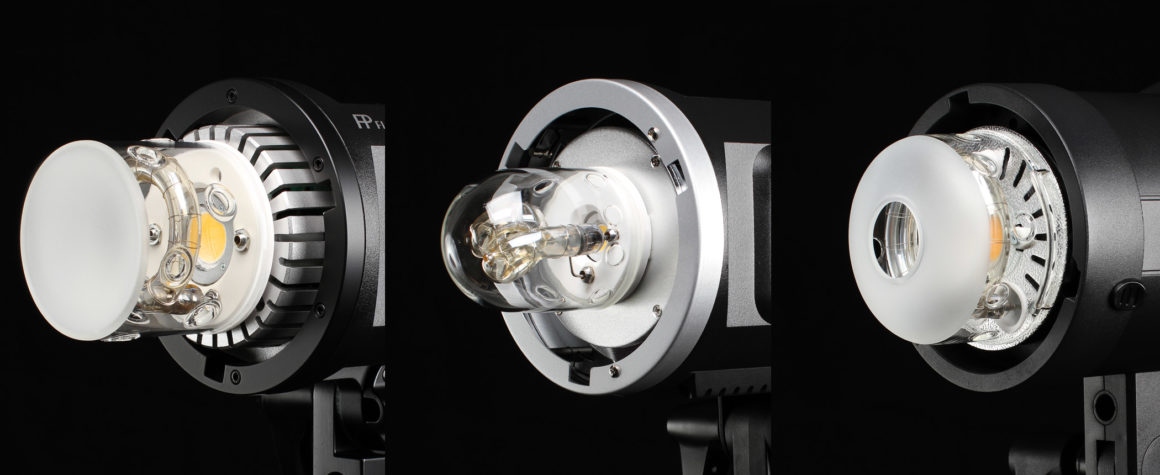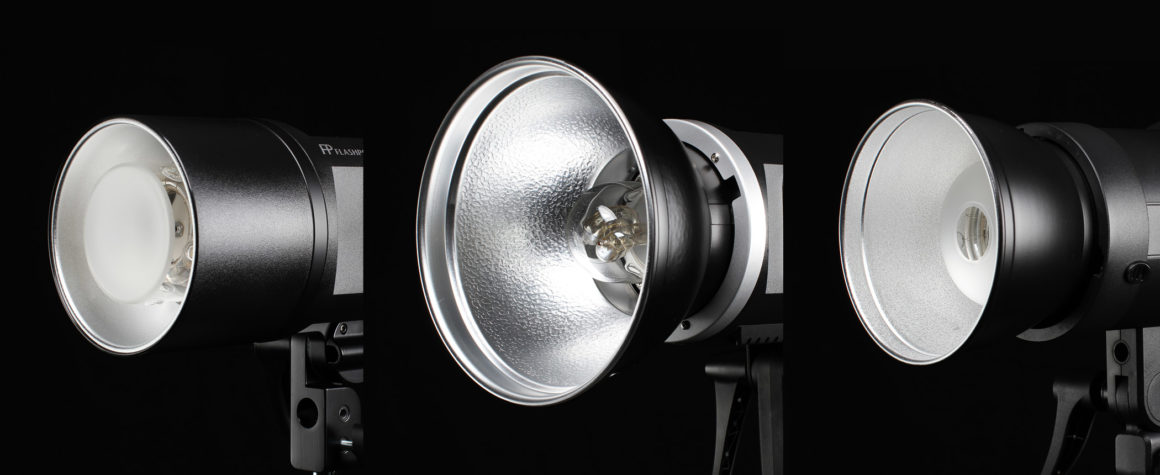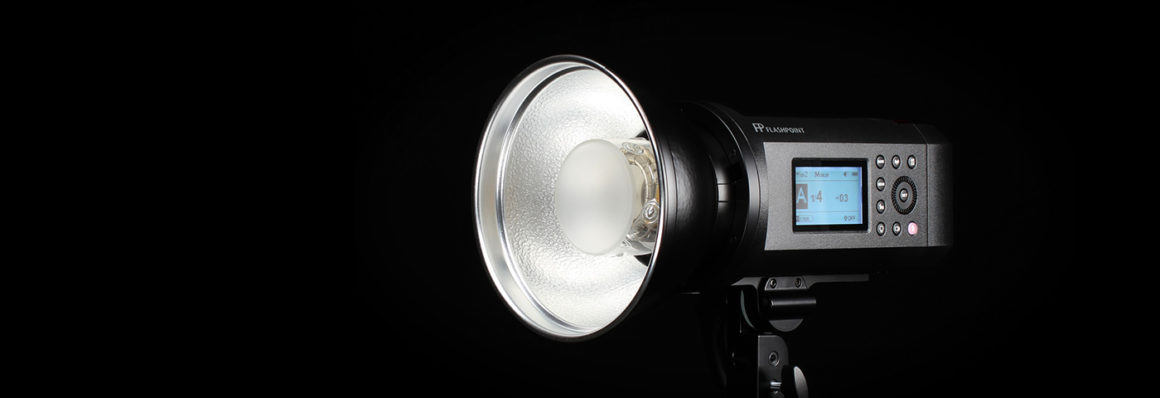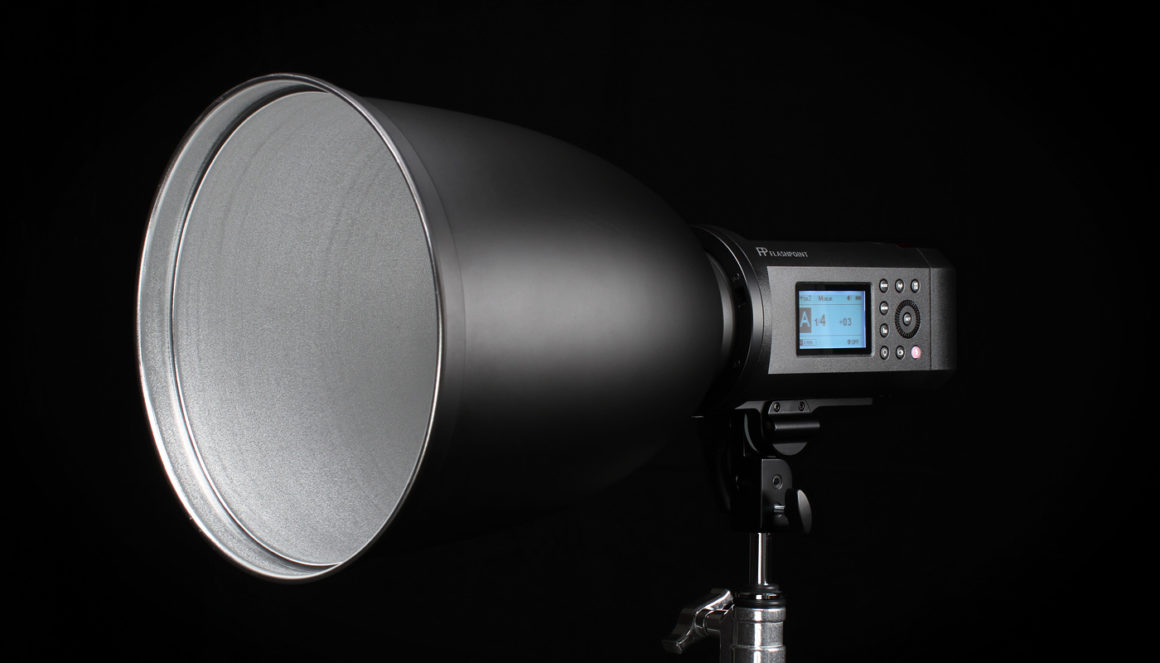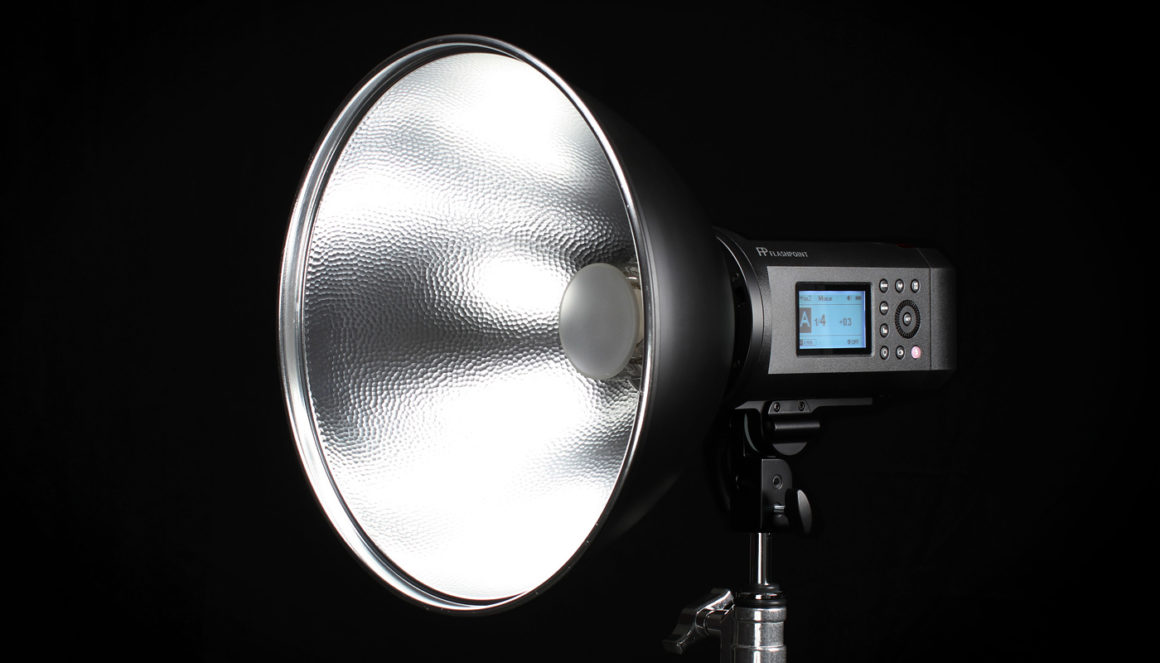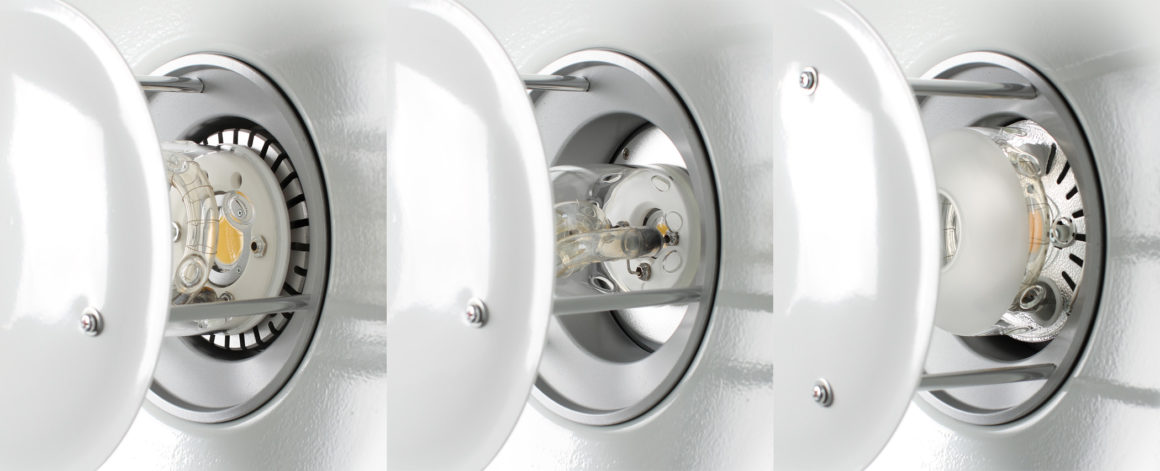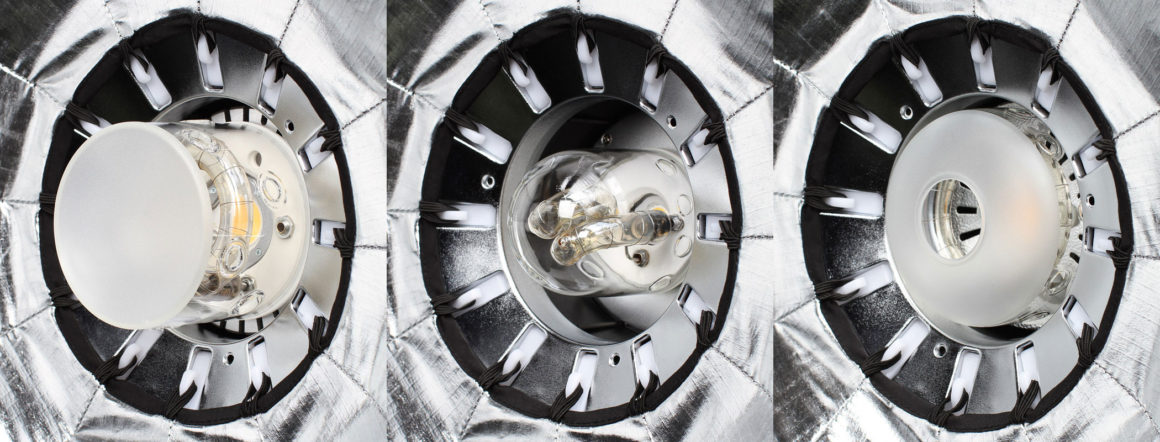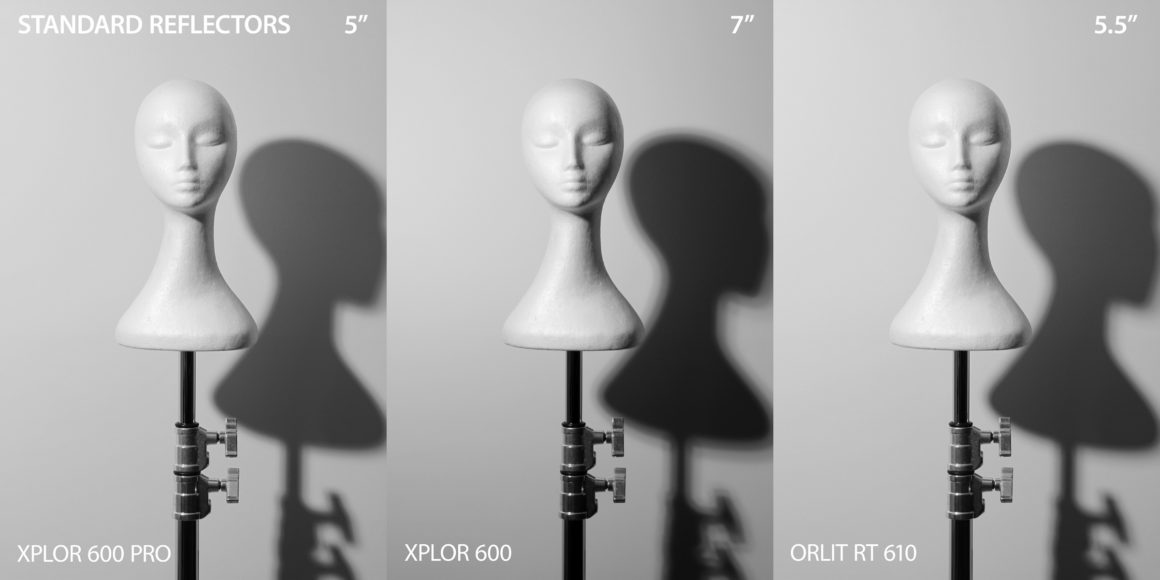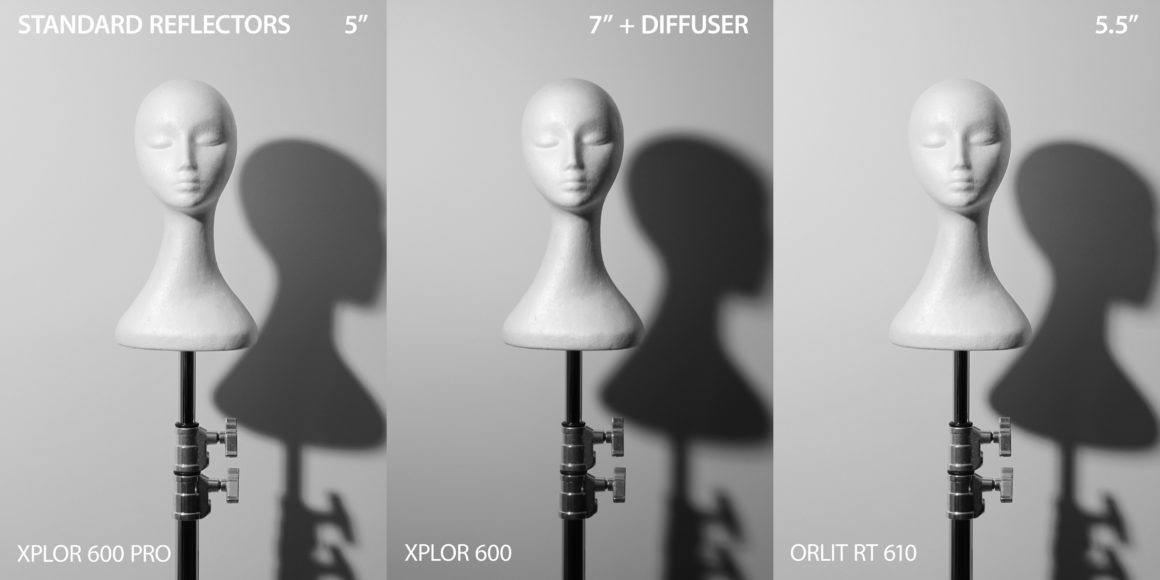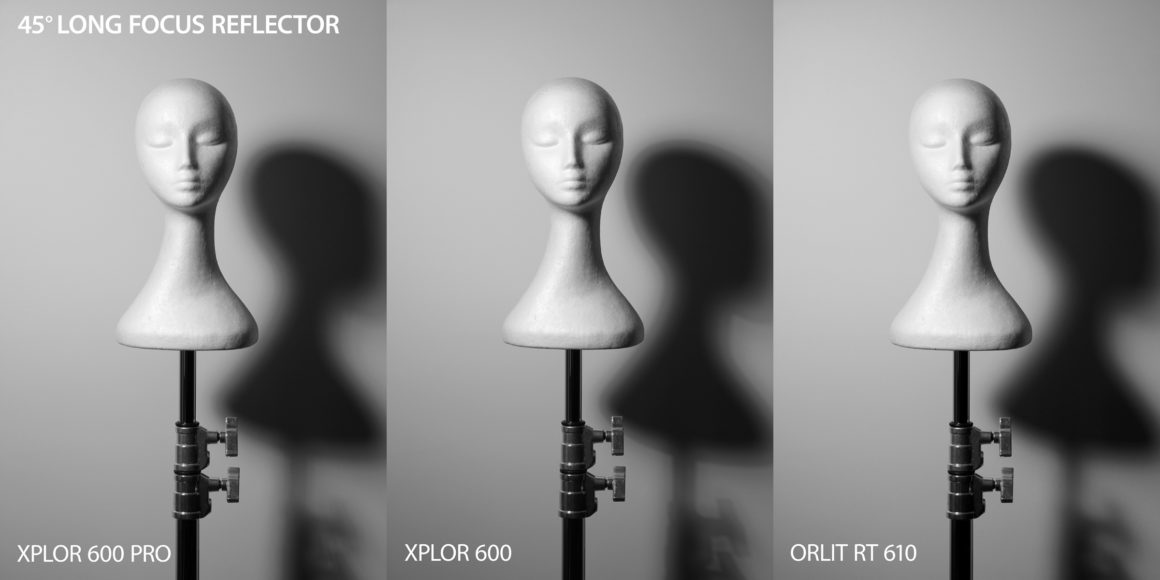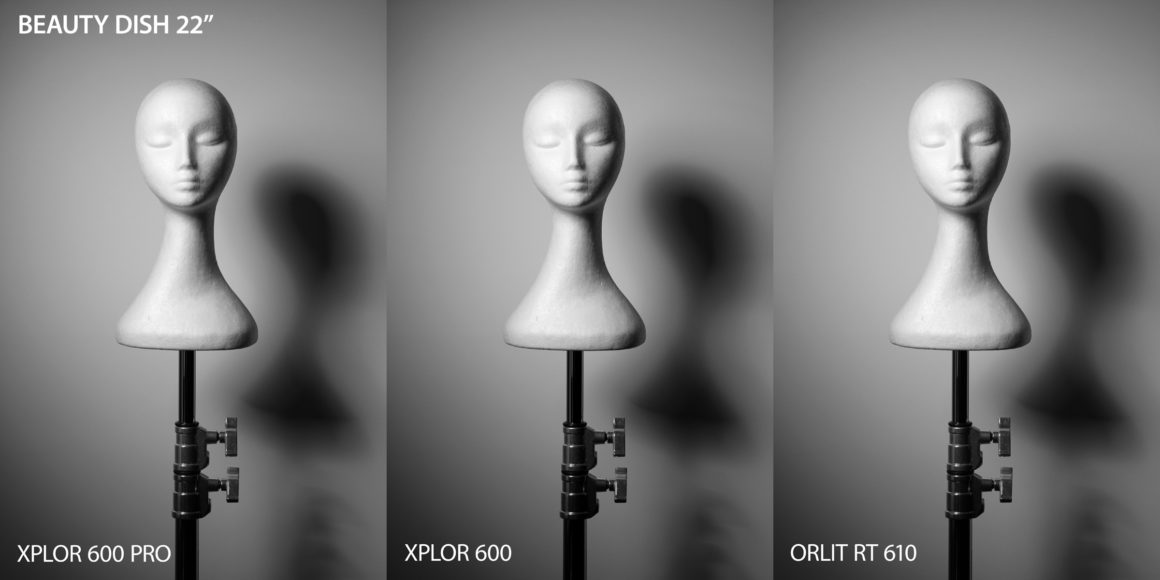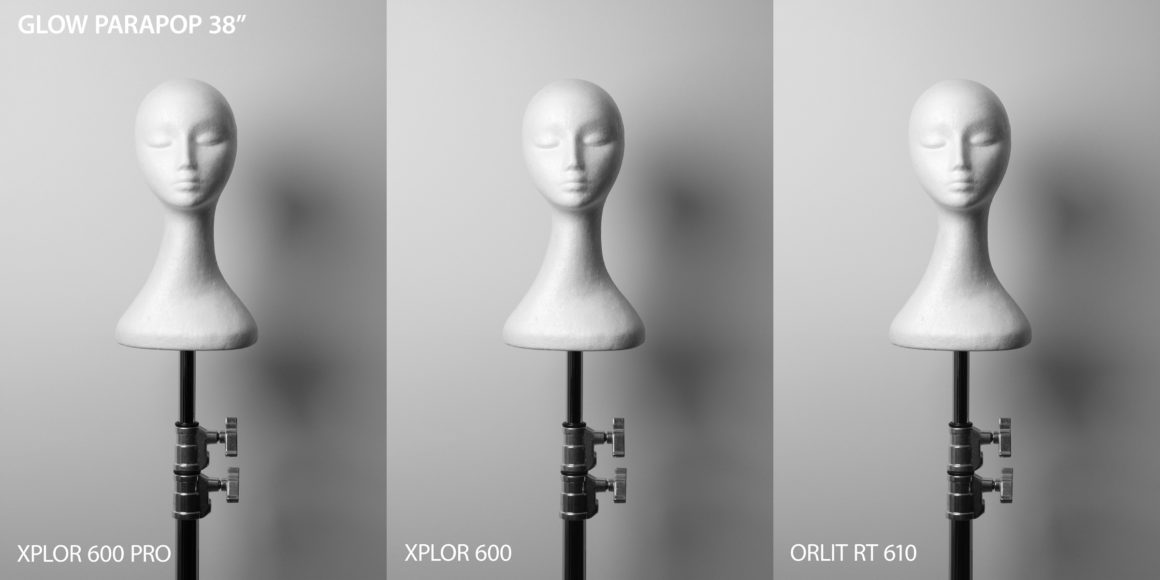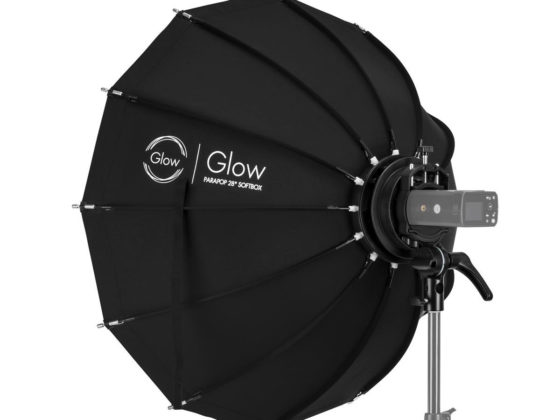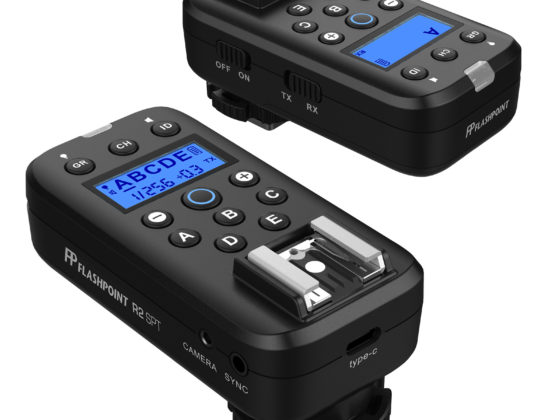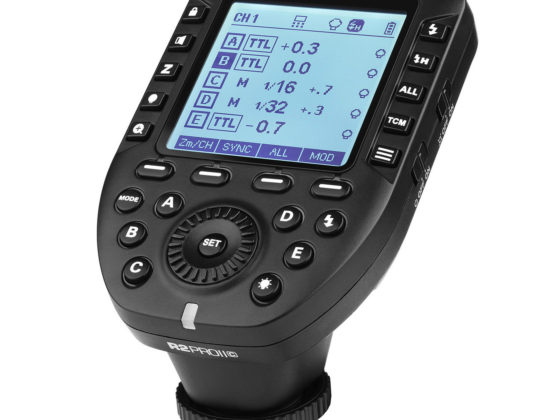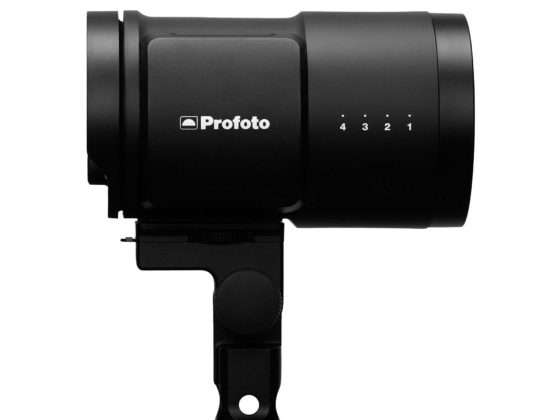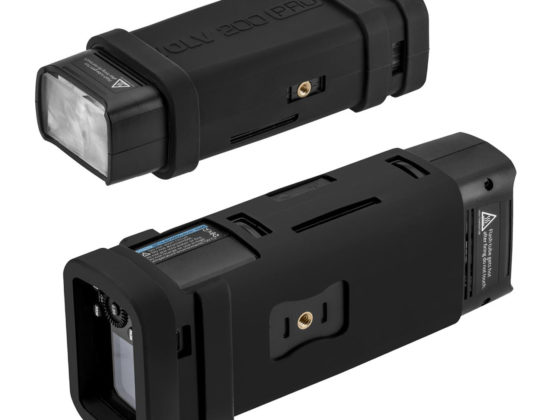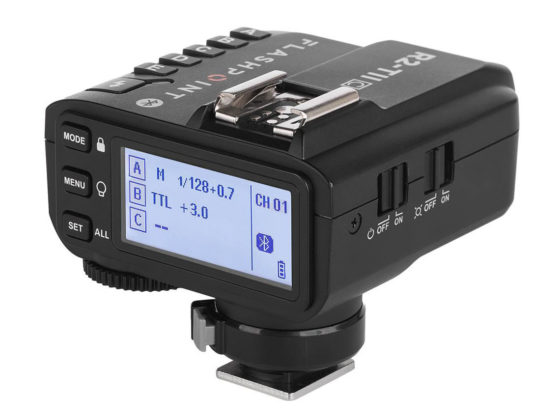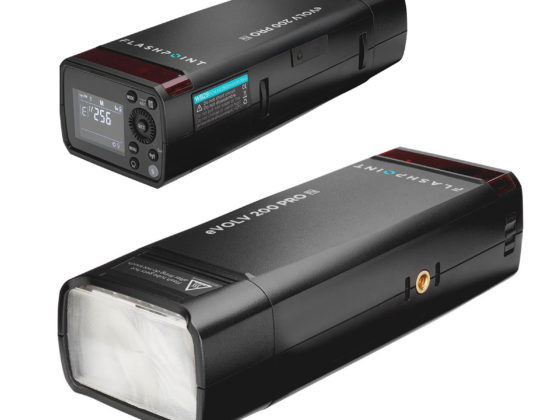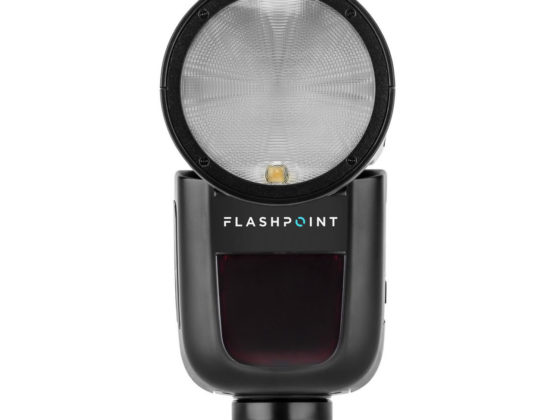The Flashpoint XPLOR 600 PRO are the follow up to Flashpoint’s game changing XPLOR 600, TTL and HSS enabled 600Ws cordless strobes.
Both units being based on Godox’s AD600 PRO, and original AD600, and fully compatible with the complete Godox / Flashpoint R2 system of radio enabled strobes.
And what a huge transformation the 600 PRO now offer over the previous lights, both in performance and sleek new design.
The 600 PRO are only Godox / Flashpoint’s second generation TTL cordless strobe, and already challenging the best alternatives available. In many ways now setting a benchmark for others to follow.
The 600 PRO now feature exceptionally fast recycle times, powerful 38W LED modelling light, and color accuracy to offer a serious alternative to traditional AC powered monolights.
This 600 PRO are really the first cordless strobe available to provide all of the most required functions into one unit, for both studio and location use.
And that’s mainly because no one else is offering a cordless strobe with the option of a remote Extension Head. And having these 2 options in the one light has been a large part of the success of the original 600, and now the 600 PRO.
An optional AC power adapter is also available for extended use.
There are also significant refinements in the strobes swivel design and modifier mount, which both make the 600 PRO now much more enjoyable to use.
The flash tube design and spacing has also been refined, which is discussed in more detail further bellow.
The only thing really missing from the 600 PRO is possibly a very fast flash duration mode.
Significant improvements over the original XPLOR 600 include –
- Super Fast 0.9 Second Recycle Time
- Color Stability Mode (+/- 100K Over Power Range)
- Powerful 38 Watt LED Modelling Light
- Refined Flash Tube Design & Positioning
- Streamline Reflector Included
- Smooth Action All Metal Compact Swivel Mount
- Refined S-Type Modifier Mount
- Removable Rear Tilt Handle
XPLOR 600 PRO FEATURES
- 600Ws
- GN 87M (ISO 100, Included Reflector)
- Fan Cooled
- 38W LED Modelling Light (Fully Adjustable)
- Bowens S-type Mount
- Optional Remote Head
- Optional AC Power Adapter
- Built in (removable) 28.8V / 2600mAh Lithium-ion Battery
- Up to 360 Full Power Pops Per Battery Charge
- 0.01 – 0.9 Seconds Recycle Time
- Flash Modes – TTL / M / Multi
- HSS to 1/8000th
- Second Curtain Sync
- FEC / FEB – 1/3rd Increments (±3 Stops)
- FEL (Flash Exposure Lock)
- Manual Flash – 1/256 – 1/1 Output (1/10th Increments)
- Flashpoint R2 / Godox X, 2.4GHz Radio System
- Canon, Nikon, Sony, Fuji, M4/3, Pentax, Leica, Rx Modes (Auto Switching)
- Range – 100m + with X1 as Transmitter
- Groups – A / B / C / D / E
- 32 Channels
- Supports Legacy Godox FT-16 XT-16 Remote Manual Trigger System
- S1 & S2 Optic Slave Modes
- Flash Duration – 1/220s-1/10100s
- Color Stability Mode (+/- 100K Over Power Range)
- Large Dot Matrix LCD Display
- Custom Functions
- Auto Memory Function
- Type C USB Port for Firmware Upgrades
- USB Communication Port (For FTR-16 & XTR-16 Receivers)
- 3.5mm Sync Port
SYSTEM OVERVIEW
A major feature of the Godox X / Flashpoint R2 System has become the cross platform support for Canon, Nikon, Sony, Fuji, Olympus / Panasonic, Pentax, and Leica camera systems, supporting both TTL and HSS.
The auto sensing radio receiver mode built into the 600 PRO, and most of the Flashpoint R2 / Godox X system strobes, allows different camera brands to be used with the same set of remote strobes at the same time.
The recent R2 Pro / Xpro transmitters have provided a big improvement in the system, with a very user friendly interface. And even more refined transmitter options are on the way.
The provided TCM function is also a significant feature, allowing quick initial TTL exposures to be converted to manual power settings for further refinement and consistency.
Previuously when looking at a new TTL strobe, examining the TTL exposures, and radio trigger performance, would be some of the highest priorities, though these are already quite a well known quantity with the Godox / Flashpoint R2 System.
As a very brief overview, a large part of the success of the original XPLOR / AD600 has been fairly solid TTL exposures, and a simple though reliable radio system from the beginning.
There are a number of intricacies and ongoing generally small loose ends which are usually ironed out over time. And it would be best to look at the post on the transmitter or master flash version you intend to use to see more discussion on these.
If you’re a wedding / event photographer looking for an integrated system with a master speedlight on camera, you will also need to use a Flashpoint / Godox speedlight, so I would suggest trying those first to see if they are going to meet your needs.
IN COMPARISON
The original XPLOR / AD600B, TTL or Manual versions, are not being replaced by the 600 PRO at this stage. They will still be sold along side the new version as a more economical alternative. So I have tried to include something of a comparison between the strobes in this review.
The Jinbei HD 610 (Branded ORLIT RT 610 here) have also been included in places, as they are generally the other main comparable alternative people have been weighing up between.
Though keep in mind, although the RT 610 in many respects weigh up favorably compared with the original XPLOR, they unfortunately do not offer a remote head option, and the radio system is not as mature or refined as Godox / Flashpoint’s at this stage.
SIZE
The 600 PRO’s body is actually now slightly longer than the original –
Though with the new included compact reflector, and slimline swivel design, the 600 PRO comes out considerably more compact overall.
Its clear the designers were conscious of the demand for a unit that is as compact as possible for transport and use on location etc.
The 600 PRO’s included compact reflector is more of a wide angle umbrella style reflector though, so its not a completely an apples to apples comparison anymore.
Supplied with a similar compact size reflector though, the Jinbei / RT 610 starts to appear quite a bit larger overall in comparison.
WEIGHT
The 600 PRO may be more compact, though it has actually added 433 grams of weight over the original 600.
There is no free lunch unfortunately, and the trade off for fast recycle times, and powerful LED light etc, is some added weight due to the additional metal heat sinks and cooling required.
The new metal swivel and refined modifier mount would also contribute some weight.
- 600 PRO – 3234g
- XPLOR – 2801g
- RT 610 – 3008g
INTERFACE
The 600 PRO’s LCD interface is also a nice improvement over the original.
The LCD screen is the same size, though the resolution is higher, and important information like the Group and Power Level display have been emphasized.
The buttons are now spaced further apart for easier access, and the larger control dial makes adjustments considerably quicker and easier.
I have noticed a trend with Godox simplifying things where possible, and so the Canon and Nikon Optic Wireless modes are no longer provided. Basic S1 and S2 optic receiver modes are still available though.
Overall the interface is very clean, simple, and fast to use, which is hard to fault.
There is a nice simple custom function menu, with numerous options available. The Alternate firing and Mask functions being nice new features.
Personally I would have liked to have seen something of a second LCD screen on the opposite side of the strobe as well. Mainly just to display the current group, and confirm when remotely adjusted power levels are changing correctly on the strobe.
And an option to hear a beep when power levels are changing on the strobe would be nice as well, particularly for the times when you can’t see the LCD screen.
BATTERY
Possibly the most controversial change (at least for current XPLOR / AD600 strobe owners) has been the change from a 14.4 volt, to a 28.8 volt battery system.
Godox have apparently made the change to allow for the strobes very fast recycle times, which is certainly a significant upgrade. One trade off though is battery capacity has now decreased from an exceptional 500 full power shots, down to around 360.
The other issue for current XPLOR / AD600 owners is that the new battery is not compatible with the original strobes. And that adds to the charger, AC power supply, remote head, and bulb all not being compatible between units. So this may see people eventually moving completely to one camp or the other.
The 600 Pro battery is quite similar in size to the original, and and a little lighter at 566 grams, verses 618 grams.
Once again a battery level indicator is built-in (as well as provided on the strobes LCD display).
The battery mount has now adopted a metal pin system very similar to the one used with the EVOLV / AD200 modular flash head.
And the backing plate on the strobe itself is now plastic, rather than metal like the original strobe. This appears fairly solid though, and its still fast and easy to attach and remove the battery.
As with the original strobe, an optional AC power adapter is also available, which is mounted in place of the battery.
FLASHTUBE
To allow for a larger and unobstructed LED modelling light, Godox have moved to a more traditional horseshoe style flash tube.
Though this is still a convenient and easily removable plug in design, which also allows for the remote Extension Head to plug in in place of the bulb.
The shape of the flash tube, spacing, and frosted front diffuser all have effects on the quality of light projected, which is discussed further below under the Power & Light Pattern heading.
The flash tube has also been spaced out further from the modifier mount, so that it will now protrude further into modifiers. And this can have a big impact on the spread and light output in various soft boxes and modifiers.
With the change of flash tube shape though this may not appear to have actually created much advantage. Though as shown further below, when using an average width Bowen’s speedring this can still make a noticeable difference.
LED MODELING LIGHT
The 600 PRO’s 38W LED modelling light is a substantial upgrade from the 10W used in the original 600, and now brings the battery powered strobe far more inline with the capability of AC powered studio lights.
The LED has full manual control from 1% to 100%, as well as Proportional Mode to follow the strobes manual power levels. And can be set to run constantly, or intermittently (switching off just while the strobe fires and recycles).
Measured in a double diffused Glow ParaPop 38″ softbox, the 600 PRO’s LED provided a light meter reading of 0.6 stops more light than the Godox QT600 II with traditional 150W halogen bulb. So comparable to around a 230W traditional bulb.
In the same softbox the 600 PRO was also 0.6 stops more than the 20W LED in the Jinbei / ORLIT RT 610.
And 1.6 stops more light than the 10W LED in the original XPLOR / AD600.
The color temperature of the 600 PRO’s LED is a slightly unusual 4600K (measured at 4679K).
And the CRI (Ra) reading has also gone backwards a little from the original strobe, from around 93.8 back to around 91.
Note the ORLIT RT 610 is only at 86.3, with its warmer tungsten balanced temperature.
The 600 PRO’s LED appears to be able to run constantly at full power for some time. Though after a few minutes at full power the fan will go into high speed mode, which does make some noise.
So combined with the CRI, the PRO’s LED doesn’t appear to be aimed at high quality video use at this stage. Though its probably fine for some impromptu filming.
Overall the 600 PRO’s LED now appears to work very well as a modelling light.
MODIFIER MOUNT
The 600 PRO’s new S-type modifier mount has improved significantly over the original strobes.
With what appears to be a combination of using stiffer spring tabs, and just getting the tolerances right, modifiers now have a very neat and firm fit. No more rattling reflectors or sagging softboxes.
I may be just lucky, though every modifier I have tried fits straight on, and with a nice firm fit.
With the Jinbei strobes in comparison it sometimes requires filing down the outer diameter of the bayonet lugs, just to fit the speedring into the strobe mount. And once on they still rattle around.
So this new mount is a great step forward, and really makes the 600 PRO feel a lot more refined.
SWIVEL MOUNT
One of the nicest physical improvement over the original strobes is also the new smooth action, stepless, metal swivel mount.
This is really a very simple design, just using a disc made of some type of friction material sandwiched in the middle of the swivel joint. Something like a miniature grip head.
This works well, and would hold a 120cm deep parabolic without creeping down. And for any larger modifiers it would be better to attach those directly to the light stand in any case.
There is no friction at all once you release the swivel’s handle though, so the strobe and modifier will basically free fall if not supported before loosening the handle.
In comparison the Jinbei swivels are a slightly more sophisticated design, always providing some resistance even when loosened. Which is surely safer and feels a bit more refined.
The large ON / OFF switch, now relocated to the bottom of the strobe is a nice improvement as well. It also switches off quickly now, though still requires a 2 second hold to switch on.
One small issue with the strobes swivel base is the depth of the hole when attaching to longer baby pin studs like those used on C-stands and Avenger light stands.
The 600 PRO swivel base does actually mount really nicely on these, its just that there is only 1 or 2mm at most, covering past the recessed section of the stud.
That’s not really an issue on light stands where the weight of the strobe is forcing it down onto the stud, though it makes me nervous if using an Avenger drop down pin on the end of a boom arm where gravity is pulling the strobe down.
To fix this one option is to file more of a chamfer on the end of the drop down pin like shown here, so that it goes a bit further into the swivel base hole.
The light shouldn’t fall off the stud completely in any case, though it would save giving someone a fright if it dropped a little and propped sideways on the stud.
Otherwise the 600 PRO’s swivel fits securely without movement even on the C-stands . Where the Jinbei / ORLIT RT 610 will rock a little on the stud even with the thumbscrew fully tight, which is really not great.
The hole in the side of the 600 PRO’s swivel base can be used when attaching the strobe to a light stand, during remote head use, which appears to be a good idea.
This was an issue with the original strobe sitting out too far from the stand (unless you could rig up a mounting stud with a 90 degree elbow).
The 600 PRO swivel handle is once again plastic (which has not been ideal in the past). It does feel more solid, though it does still flex a little.
The handles metal insert is now shaped like a regular nut though at least. As previously the handle could strip on the round threaded insert, and leave you with a broken handle that is very difficult to remove.
If using larger modifiers often it may still be best to just swap the handle with a metal one yourself anyway.
The umbrella mount provides clearance on 8mm umbrella shafts, and just uses a simple spring tab to place a little tension on the umbrella shaft.
Some people don’t like the way this type of mount allows the umbrella shaft to sag down, and move around. While others have said its a good thing that the umbrella will come out of the mount freely if there is a gust of wind, effectively saving the strobe from damage.
One good thing is the umbrella mount is now a separate part which is screwed on, so Godox or third parties could possibly provide other options later.
There is no longer a bulky handle built in to the swivel mount like the original strobes have. Though inexpensive handles like the one shown below can be purchased on Ebay etc, which should do the job fine if needed.
And if holding the strobe at head height or higher, its generally much easier to use a pole or monopod than to hold your arms up high for any period anyway.
CARRY CASE
Once again the XPLOR 600 PRO comes with a fairly nice carry case. And now much more compact than with the original strobes. The design has been revised, and being smaller makes the sidewalls and overall case significantly more rigid.
The strobe now fits into the case with the reflector attached, and a supplied end cap for the reflector protects the flash tube. The battery must be detached from the strobe though to fit the strobe in.
(Ideally though it would be nice to have rigid plastic hard cases supplied at this stage).
COLOR & CONSISTENCY
Below is a quick overview of the color and consistency results as tested with a Sekonic C-700 color meter.
The XPLOR PRO’s new Color mode is only available when using manual power levels, and outside of HSS mode.
Also when using Color Consistency mode with the 600 PRO, the strobe acts partially like a voltage controlled flash, so whenever changing to a lower power level you need to press the test fire button to release the excess energy in the capacitors. There is no auto dump.
In Color Consistency mode the XPLOR 600 PRO ranged from 5435K at full power, to 5624K at 1/32 power.
A total variation of 189K, which is possibly just within Godox’s spec of +/- 100K. (Though a bit outside the +/- 75K spec Flashpoint have stated at times).
CRI (Ra) readings are above 98 at all a power levels, and the Green / Magenta balance is mostly neutral, with a slight 0.1 Magenta tint only showing around 1/128 power level.
1/1 POWER
1/32 POWER
Please Note – The readings below are just provided as an indication. Results may vary from strobe to strobe, and with different meters, and test conditions etc.
| XPLOR 600 PRO COLOR MODE | |||||||||
| VARI | TINT | ||||||||
| 1/1 | 5445 | 5449 | 5441 | 5435 | 5438 | 5442 | 11 K | ||
| 1/2 | 5510 | 5509 | 5517 | 5517 | 5507 | 5516 | 10 K | ||
| 1/4 | 5535 | 5532 | 5532 | 5536 | 5543 | 5531 | 12 K | ||
| 1/8 | 5548 | 5555 | 5546 | 5550 | 5566 | 5550 | 20 K | ||
| 1/16 | 5594 | 5602 | 5594 | 5599 | 5584 | 5600 | 18 K | ||
| 1/32 | 5619 | 5620 | 5624 | 5612 | 5599 | 5604 | 25 K | ||
| 1/64 | 5596 | 5607 | 5573 | 5611 | 5607 | 5590 | 38 K | ||
| 1/128 | 5570 | 5625 | 5603 | 5603 | 5572 | 5580 | 55 K | 0.1M | |
| 1/256 | 5593 | 5547 | 5602 | 5569 | 5560 | 5540 | 62 K | ||
| Max Variation 5624 – 5435 = 189 K | |||||||||
XPLOR 600 PRO – REGULAR MODE
In regular mode the XPLOR 600 PRO ranged from 5430K at full power, to 5788K at 1/16 power.
A total variation of 358K, which again is within Godox’s spec of 5600K +/- 200K.
Variation from shot to shot is still fairly minimal.
CRI (Ra) readings are also above 98 at all a power levels, and a slight Magenta tint creeping in.
| XPLOR 600 PRO REGULAR MODE | |||||||||
| VARI | TINT | ||||||||
| 1/1 | 5430 | 5446 | 5441 | 5445 | 5440 | 5442 | 16 K | ||
| 1/2 | 5559 | 5571 | 5565 | 5562 | 5565 | 5568 | 12 K | 0.1M | |
| 1/4 | 5650 | 5657 | 5615 | 5661 | 5650 | 5658 | 46 K | 0.1M | |
| 1/8 | 5729 | 5726 | 5722 | 5738 | 5725 | 5723 | 16 K | 0.1M | |
| 1/16 | 5718 | 5788 | 5781 | 5778 | 5782 | 5783 | 70 K | 0.1M | |
| 1/32 | 5755 | 5746 | 5772 | 5763 | 5769 | 5763 | 26 K | 0.1M | |
| 1/64 | 5711 | 5699 | 5693 | 5715 | 5711 | 5693 | 22 K | 0.1M | |
| 1/128 | 5729 | 5728 | 5748 | 5695 | 5696 | 5726 | 53 K | 0.1M | |
| 1/256 | 5748 | 5638 | 5630 | 5736 | 5631 | 5683 | 118 K | 0.2M | |
| Max Variation 5788 – 5430 = 358 K | |||||||||
XPLOR 600
The original XPLOR 600 ranged from a cooler 5688K at full power, to 6435K at 1/256 power.
A total variation of 747K, which is actually well outside of Godox’s spec of 5600K +/- 200K.
Though again variation between shots is still mostly minimal, which is generally the most important factor.
CRI (Ra) readings are also above 98, and slightly more Magenta tint is creeping in.
| XPLOR 600 | |||||||||
| VARI | TINT | ||||||||
| 1/1 | 5700 | 5695 | 5705 | 5695 | 5696 | 5688 | 17 K | ||
| 1/2 | 5846 | 5836 | 5826 | 5843 | 5836 | 5833 | 20 K | 0.1M | |
| 1/4 | 5951 | 5975 | 5945 | 5956 | 5962 | 5957 | 30 K | 0.1M | |
| 1/8 | 6058 | 6055 | 6050 | 6052 | 6057 | 6043 | 15 K | 0.2M | |
| 1/16 | 6125 | 6131 | 6139 | 6114 | 6128 | 6127 | 25 K | 0.2M | |
| 1/32 | 6134 | 6122 | 6103 | 6146 | 6157 | 6157 | 54 K | 0.2M | |
| 1/64 | 6096 | 6100 | 6124 | 6121 | 6150 | 6143 | 54 K | 0.2M | |
| 1/128 | 6249 | 621 | 6152 | 6310 | 6296 | 6277 | 158 K | 0.2M | |
| 1/256 | 6390 | 6435 | 6434 | 6406 | 6388 | 6398 | 47 K | 0.3M | |
| Max Variation 6435 – 5688 = 747 K | |||||||||
JINBEI / ORLIT RT 610
In Normal mode (not Freeze mode) the ORLIT RT 610 ranged from 5408K at 1/16 power, to 5790K at 1/128 power.
A total variation of 382K, which is just within Jinbei’s spec of 5600K +/- 200K.
Variation from shot to shot is again mostly minimal.
CRI readings (Ra) are mostly around 97.6, and a slight Green tint is starting to show around 1/16 and 1/32 power.
| ORLIT RT 610 NORMAL MODE | |||||||||
| VARI | TINT | ||||||||
| 1/1 | 5581 | 5587 | 5590 | 5582 | 5585 | 5578 | 12 K | ||
| 1/2 | 5552 | 5562 | 5556 | 5556 | 5548 | 5549 | 14 K | ||
| 1/4 | 5571 | 5567 | 5557 | 5579 | 5569 | 5565 | 22 K | ||
| 1/8 | 5733 | 5738 | 5750 | 5730 | 5729 | 5734 | 21 K | ||
| 1/16 | 5408 | 5435 | 5432 | 5436 | 5408 | 5422 | 28 K | 0.1G | |
| 1/32 | 5570 | 5586 | 5572 | 5562 | 5572 | 5577 | 24 K | 0.1G | |
| 1/64 | 5629 | 5624 | 5636 | 5631 | 5639 | 5636 | 15 K | ||
| 1/128 | 5790 | 5759 | 5733 | 5746 | 5756 | 5746 | 57 K | ||
| 1/256 | 5688 | 5632 | 5671 | 5630 | 5609 | 5569 | 119 K | ||
| Max Variation 5790 – 5408 = 382 K | |||||||||
FLASH DURATIONS
Being an IGBT strobe the 600 PRO natively provide fairly fast T0.1 flash durations, stated as 1/220s at full power, to 1/10100s at 1/256 power.
Looking at it now though, it is a little surprising Godox did not also include a Freeze Mode with faster durations, as this is the only thing stopping the 600 PRO completely knocking it out of the park on almost every level.
Measuring the flash durations with the Sekonic L-858D light meter I found most of the 600 / PRO stated durations to be fairly accurate, mainly just the full and minimum power were a little bit optimistic.
Interestingly the Flashpoint Rapid 600 / Godox QT600 was actually reading much faster at full power than the specs state, so I need to look into that further.
If you’re wanting to compare the specs with other strobes, keep in mind the durations are often stated as T0.5 times, not T0.1. So I have also included the T0.5 times for the 600 PRO in second pair of graphs below.
XPLOR 600 PRO –
XPLOR 600 PRO T0.5 –
XPLOR 600 COLOR MODE –
XPLOR 600 –
ORLIT RT 610 FREEZE MODE –
RAPID 600 / QT600 HIGH SPEED MODE –
RECYCLE TIMES
The 600 PRO recycle times are genuinely fast. A second or just under at full power, and less than half a second at 1/2 power.
That’s fast enough to basically shoot single frames whenever you want to at 1/2 power.
At 1/16th power the 600 PRO will keep up with 10 frames per second.
And the strobe will still allow 100 shots at 1/1 power before over temperature protection comes in. And again 50 shots at 1/1 in HSS mode like the original XPLOR.
And that seems pretty impressive considering the extra heat created when firing over twice as fast as the original strobes.
POWER AND LIGHT PATTERNS
Considering the impressive recycle times of the 600 PRO, it wouldn’t be unreasonable to suspect Godox may have tweaked the overall power output to allow for that (if so they wouldn’t be the first).
To cut a long story short though, the power output of the 600 PRO does appear to be the same as the original strobes, as Godox have stated.
In modifiers like softboxes and beauty dishes the light output tends to be a little more than the original strobes, due to the different flash tube style and spacing.
The compact 5″ reflector supplied with the 600 PRO appears to be much more of a wide angle umbrella style reflector, than the more focused 7″ reflector supplied with the original XPLOR 600 strobes.
And that supplied 5″ reflector, providing a broader even light pattern, is nice, though over a stop less bright than the original 600 with supplied 7″ reflector.
Where this gets tricky though, is placing the original 7″ reflector on the 600 PRO does not focus, and boost the light output to match the original 600.
So Flashpoint are currently looking into different 7″ reflector options that may suit the 600 PRO better.
Having said all of that, the 600 PRO with 5″ reflector is much like the Jinbei / ORLIT RT 610 with supplied 5.5″ reflector. And even going back to the original Rovelights, many people have preferred to use them with the smaller reflector just for convenience, regardless of output.
As mentioned previously, the 600 PRO’s flash tube has now been spaced out further from the modifier mount, to improve penetration into speedring and modifiers.
And as show below, with an average Bowens style speedring, the 600 PRO’s flash tube can often be 100% exposed with a 180 degree spread of light.
Where in the same situation almost half of the original strobes flash tube is blocked from directing light out to the sides.
Also looking at the bare flash tubes, the horseshoe style tube of the 600 PRO natively directs a larger ring of light to the sides, all the way around.
And the frosted front diffuser on the face of the bulb cuts down and diffuses the light being projected directly forward.
When combined with the speedring the 600 PRO flash tube is still projecting a lot of light directly outward, which is going to help fill larger, and shallow modifiers, and strip boxes etc.
And even in a relatively small 38″ ParaPop softbox below, you can start to see the broader even spread of light. And slightly greater intensity pushing light out further.
The 22″ beauty dish equalizes things more, though the different light pattern is noticeable from the 600 PRO tube.
And looking at the 600 PRO with 5″ reflector, there is a much broader spread of light. Though it doesn’t have the focus and intensity of the original XPLOR with 7″ reflector.
Projected into an umbrella the 600 PRO and 5″ reflector provide virtually full coverage, and much more even light than the hot spot created with the XPLOR and 7″ reflector. (Side view here as well).
LIGHT OUTPUT
Measuring the light output I have again included the Jinbei HD 610 / ORLIT RT 610 in the comparison, which is also a good example of the more commonly spaced horseshoe flash tube style configuration found in many regular AC studio strobes.
(The Jinbei / ORLIT’s removable frosted flash tube cover can also effect outcomes if removed).
NOTE – Although the light meter readings below where taken at full power, the images below where shot at 1/8 power (otherwise they would be blown out). And the RT 610 was down 0.3 to 0.4 stops at 1/8 power compared to the other lights, that’s why those images may look darker than the meter readings suggest.
For simplicity all images where shot at the same distance of 4′ (120cm) to the light itself. The lights where not moved back to account for the length of larger reflectors being attached.
SUPPLIED REFLECTORS
The focused 7″ reflector with the original XPLOR meters a significant 1.4 stops ahead of the much more broad light pattern of the 600 PRO and 5″ reflector.
And the RT 610 with 5.5″ reflector is somewhat similar pattern to the 600 PRO (just 0.2 stops ahead).
7″ REFLECTOR
With the XPLOR 7″ reflector mounted to the 600 PRO, the result was still 1.2 stops below the original XPLOR. The PRO still providing a very broad spread of light.
Though the RT 610 with 7″ reflector now matches the XPLOR.
So I tried all of the 7″ reflectors I have from other strobes etc on the 600 PRO, and the best result was only 0.2 stops brighter (using a Phottix Indra500 7″ reflector).
So possibly I was just a bit unlucky so far, otherwise Flashpoint and Godox may possibly need to create a dedicated 7″ reflector specifically designed to maximise the 600 PRO’s output.
5″ REFLECTOR
Mounting the 600 PRO 5″ reflector on each strobe –
5.5″ REFLECTOR
Mounting the RT 610 5.5″ reflector on each strobe.
This provides a better umbrella reflector style result with the original XPLOR than using the 600 PRO reflector as above.
45° LONG FOCUS REFLECTOR
The other main reflector options available to focus the light and increase output are generaly the 45° Long Focus Reflector (11″), and the 70° Magnum Reflector (14″) below.
And the 600 PRO now does pretty well with the 45° Long Focus, at 0.3 stops behind the XPLOR.
The light pattern is more of a gradual fall off though, rather than the crisp edge which is likely more unique to the original 600.
The 45° Long Focus reflector roughly lights an area the same diameter as the distance its positioned is away.
70° MAGNUM REFLECTOR
With the 70° Magnum Reflector (14″), the original XPLOR is very efficient at 0.8 stops ahead of the 600 PRO.
So if you’re looking to shoot sports or similar at a distance the original XPLOR may be the preferred option here.
The RT 610 is very poor at focusing the light beam in comparison, almost 2 stops behind the 600, and 1 stop behind the 600 PRO.
22″ BEAUTY DISH
In the 22″ beauty dish the 600 PRO starts to show its advantage, with slightly higher output, and even light pattern.
While the RT 610’s more recessed flash tube loses 1/2 a stop of light to the 600 PRO.
38″ GLOW PARAPOP
And with the 38″ Glow ParaPop softbox the 600 PRO is creeping ahead slightly further in output, and with broader even spread of light.
So its in the beauty dish and softboxes the extended flash tube of the 600 PRO really starts to show its advantage.
Bellow are some comparison sample images. I’m not sure how ideal the subject is, though the shadow thrown behind likely provides something more of an indication of how the light is reacting differently.
The exposures were equalized on the face, so this is not a comparison of output. All lights are at 4′ (120cm) from the subject, except the beauty dish set at 3′.
The image below is comparing only the 600 PRO using 5″ and 7″ reflectors.
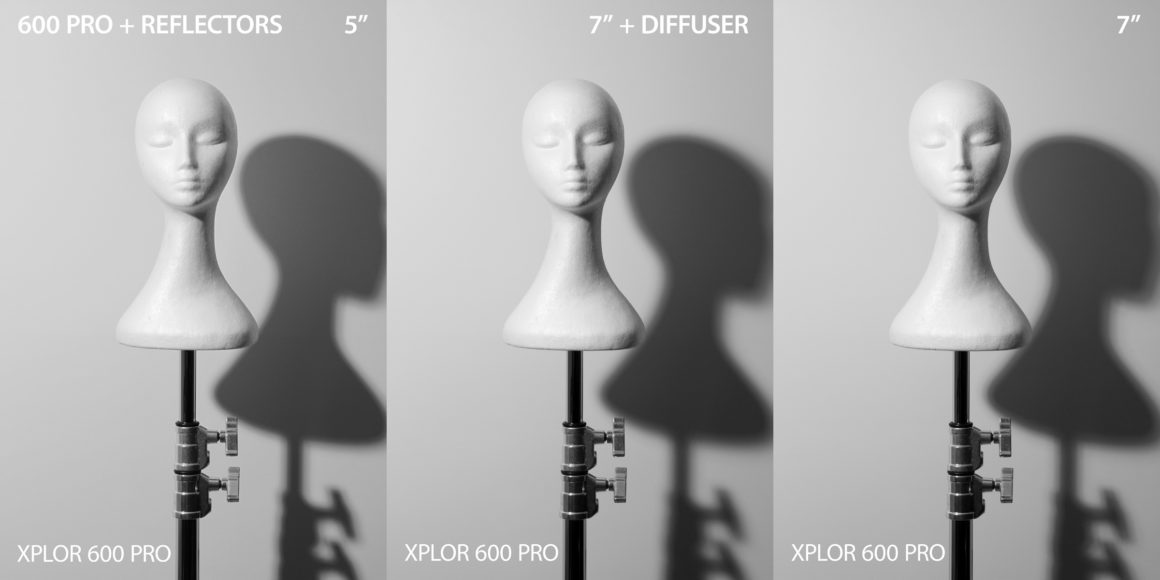
The next 2 images below are comparing strobes with their standard supplied reflector. The second image just adds a supplied plastic diffuser to the XPLOR 7″ reflector.
The next 3 images below compare each strobe using the same reflector or softbox.
Its really in the larger and shallow softboxes and umbrellas where the difference will likely be more prominent though.
SUMMARY
UPDATE 2022 – When released in early 2018 the XPLOR 600 PRO / Godox AD600 PRO TTL were another game changing light for Godox and Flashpoint, and set a new standard and direction for the lights to come. And they still remain at the top of their class today.
In addition the Godox / Flashpoint radio lighting system has become the most prominent system used worldwide by some margin. And that’s also important when you’re looking at adding compatible products, or ongoing availability of compatible batteries etc.
Since the release of the 600 PRO, Godox and Flashpoint have released smaller 400, 300, 200, and 100Ws cordless strobes, which are all great options as well. It just depends on what will suit your own needs and budget best. And you can mix always and match lights in the system as well.
The 600 PRO remain the main cordless option offering a respectable modelling light though, to provide more of a substitute for traditional AC powered monolights. As well as solid continuous firing ability, and that extra bit of power to help compete with the sun outdoors.
PRICE AND AVAILABILITY
The Flashpoint XPLOR 600 PRO TTL are available now from Adorama for $899.
Though they are often better value in the various kit bundles.
Extension Head – $129.
AC Power Adapter – $119
Adorama provide a 3 year warranty, and great support and protection options.
Flashpoint – Website
GODOX AD600 PRO – Amazon – UK – B&H Photo – Ebay
Godox – Website
Disclosure Statement – The links above, and links within the post, may contain affiliate links or promotions. These do not cost readers anything and help to keep this website alive. Many thanks for your support.
